Alien • Ruimtewese
Altar • Altaar
Calvinia • Calvinia
Carnarvon • Carnarvon
Cederberg • Cederberge
End • Einde
Endeavour • Strewe
Eva • Eva
God • God
Gold Reef City • Gold Reef City
Heaven Flower • Hemelblom
Hell • Hel
Hole • Gat
Loeloeraai • Loeloeraai
Meteorite • Meteoriet
Mirror • Spieël
Moon • Maan
Naval Hill • Naval Hill
Observatory • Observatory
Particle • Deeltjie
Planet • Planeet
Planetarium
Projection
Rocket or Ship • Vuurpeil of Skip
Rocks • Klippe
SAAKNI • SAAKNI
Space Agency • Ruimte-agentskap
Sound • Klank
Black Star • Swart Ster
Sutherland • Sutherland
Sun • Son
Table Mountain • Tafelberg
Telescope • Teleskoop
Toll house • Tolhuis
Volcano • Vulkaan
Bodies • Liggaame
The Attempt • Die Poging
Alien
Ek voel baie, baie hartseer. Maar laat my gaan, amptenaar; jy het my woord dat ek nie vier-en-twintig uur langer die aarde met my teenwoordigheid sal opskeep nie.” “Dit lyk my jy is kranksinnig ook,” sê die magistraat. “Konstabel, ek het reeds gelas om die prisonier te verwyder.” Die konstabel tree nader en lig sy hand op. Net soos hy aan Loeloeraai se arm raak, word hy slap en hy sak inmekaar. “Laat hom ’n paar uur slaap,” sê Loeloeraai. “Hy sal niks oorkom nie. Kom, Kerneels en Stoffel, kom ons gaan huis toe. Ons het baie om te gesels in die tydjie wat vir ons oorbly. Maar voor ek gaan – amptenaar, asseblief moenie gewapende magte stuur om my in hegtenis te neem nie. Ek wil niemand die minste leed aandoen nie.” Hy kyk by die oop venster van die hofsaal uit. “Sien jy daardie groot bos op die rand van die oorkantse kop ?” Hy haal ’n dingetjie nes ’n vérkyker uit sy bors en hy peil da ardeur. Toe ons weer sien staan die bos aan die vlam. “Dis maar ’n klein aanduidinkie,” sê Loeloeraai, “van die wetenskap van die bewoners van julle aandster en môrester.”
From Loeloeraai, 1923, CJ Langenhoven
"I feel very, very sad. But let me go, official; you have my word that I will no longer than twenty-four-hours bother the earth with my presence.” "It seems to me that you are insane too," said the magistrate. "Constable, I have already ordered the removal of the prisoner." The constable steps closer and raises his hand. Just as he touches Loeloeraai's arm, he becomes limp and collapses. "Let him sleep for a few hours," says Loeloeraai. "He'll be fine. Come on, Kerneels and Stoffel, let's go home. We have a lot to talk about in the time that remains for us. But before I go - official, please do not send armed forces to arrest me. I do not want to hurt anyone in the least." He looks out the open window of the courtroom. "Do you see that big bush on the edge of the opposite head?" He takes a thing like a pair of binoculars out of his chest and he peers through it. Before we knew it the bush was on fire. "It's just a small indication," says Loeloeraai, "of the science of the inhabitants of your evening star and morning star."
From Loeloeraai, 1923, CJ Langenhoven (Translated from the original Afrikaans)
“The prisoner will finish three months of hard labour and then be sent away. Constable, remove him.”
Then Loeloeraai took his first part of the events.
“Wait, constable,” he says, “I’ve got something to say to the magistrate. Official,” he continues to the magistrate, “I don’t blame you. You are doing what you perceive as your duty. I also have a duty that I’m committed to - a commitment to myself and to those that I represent here alone. In the world that I’m coming from, we are law abiding, not under the force of the magistrates and constables and jails and chains, but out of love for one another.’
From Loeloeraai, 1923, CJ Langenhoven (Translated from the original Afrikaans)
The lights are left on through the night at this new petrol station building site - mainly for safety. The manager of the building project, who also slept on site, was eager to show visitors around - clearly dedicated to building a place that everyone can be proud of. He also explained that the station will be named after the owner's daughter, who, as she grew up, really took a liking to the energy of the people working at stations of this kind.
'To whom shall I dedicate this book? It is about a being who is not human, who is higher than man - an unattainable superior.
I think I will go to the opposite - and then I will not have to look very far. I lost a friend a long time ago - a friend that I loved and who loved me. I will never see him again forever; but forever I will never forget him. Now, after all these years, there is not a day that passes without his image coming before me and I'm grieving about him. To him I was the higher being - a Loeloeraai of a higher existence. To me he was the ultimate perfection I found on earth, of love and faithfulness and virtue. And I lost him, and I miss him dearly. . .
I dedicate this work:
To the memory of
MY FRIEND AND DOG, JAKHALS’
From the dedication of Loeloeraai, CJ Langenhoven, 4th Edition 1929, First published 1923. Translated from original Afrikaans by Nic Grobler.
Photograph inspired by Loeloeraai, CJ Langenhoven. Loeloeraai is a visitor from Venus, who spends about two weeks with a family in Oudtshoorn. They end up going on a small trip to the moon before Loeloeraai returns to Venus.
'For real, that is not a shadow, but an upright being squeezed up against the edge. Kind of like a human form with two arms and legs, a narrow, oval face framed by a cap looking like a bare skull, clothed in a blue overall that they only had a glimpse of previously. Dead quiet. Francois lowers the torch, lifts it again. One thing is for sure: this being is just as afraid as they are.'
From Die Hemelblom (The Heavenly Flower) by Jan Rabie, 2nd edition 1974, Tafelberg, first published 1971. Translated from the original Afrikaans by Nic Grobler.
The first encounter with Marwa, the main alien character in Die Hemelblom takes place in a collapsed cave near the Cederberg - she takes hands with the humans as they search for the a way out together.
'Only in the morning, when the daylight crossed over the highland rocks and fynbos, they saw how strange and otherworldly the hemelblom was. The seeds that fell the previous afternoon shot up incredibly fast, each on a lump of roots that didn't enter the ground, but just gripped the ground from above. In one single night each plant became fully grown and was spreading seeds so that new plants would shoot up. In one night the hemelblomme multiplied a hundredfold. For now it was just strange. Only later it would become frightening.'
From Die Hemelblom (The Heavenly Flower) by Jan Rabie, 2nd edition 1974, Tafelberg, first published 1971. Translated from the original Afrikaans by Nic Grobler.
Photograph inspired by Die Hemelblom (The Heavenly Flower), an Afrikaans sci-fi novel by Jan Rabie.
The Hemelblom was sent to the earth by a concerned galactic council to ensure the survival of life on earth in the face of a new world war. The plant was specifically grown to remove the poisonous elements introduced by humans - feeding on pollution it would rapidly cover the earth and wipe out most of humankind but leave a new earth covered with fresh fertile soil.
'Are we alone, I don’t know - the thing is we will probably never know. If we find a civilization that can signal to us, we’ve got to be able to signal to them. If they are a 100 light years away we are talking about a 100 years between every communication, and by then the other one may have died out or they may have not reached the communications technology or we may have blown ourselves up enough to have to start all over again. So we will probably not communicate with anyone out there - not in our lifetime. But there is probably someone. We are so proud that we call them aliens - we may be the aliens. Who knows.'
Chris Forder. Amateur Telescope builder.
Altar
Calvinia
These rocks contain a high percentage of iron and their dark appearance forms a truly ancient landscape. The rocks make a metal sound when played; they are referred to with different names such as ‘rock gongs’, ‘ringing rocks’ or even ‘bushman pianos’. Found in various areas around the world and Africa, tradition formed around communicating with the help of the rocks - evident by the ancient drumming marks often found on them.
These rocks contain a high percentage of iron and their dark appearance forms a truly ancient landscape. The rocks make a ‘metal sound’ when played; they are referred to with different names like ‘rock gongs’, ‘ringing rocks’ or ‘bushman pianos’. Found in various areas around the world and accross Africa, tradition formed around communicating with the help of the rocks - evident by the ancient drumming marks often found on them. The rocks and the sounds they make were seen to have magical powers.
These rocks contain a high percentage of iron and their dark appearance forms a truly ancient landscape. The rocks make a metal sound when played; they are referred to with different names such as ‘rock gongs’, ‘ringing rocks’ or even ‘bushman pianos’. Found in various areas around the world and Africa, tradition formed around communicating with the help of the rocks - evident by the ancient drumming marks often found on them.
Carnarvon
'We saw it from far away, the dish - we saw it going up and then turning. Turning all around. It doesn't move fast - just slowly all around. It is very beautiful to see it happening.' - Abie Makok, Church Warder, United Reformed Church, Carnarvon, Northern Cape.
‘Some people have this strange notion that there is a clash between religion and science. Especially when they come to a poor congregation, where the majority are poor people, they will think that they are perhaps creationist type of people - who reject science per se. That is not even close to the truth. In fact, I think we love science, we love to know more. We may have a certain interpretation of the wonders of creation, we believe in a creator, we believe that God not only created everything but that we are part of that creation and we want to really dispel the notion of science versus religion as always clashing. The Bible was never written with the intention of writing up a science handbook.’
‘Some people have this strange notion that there is a clash between religion and science. Especially when they come to a poor congregation, where the majority are poor people, they will think that they are perhaps creationist type of people - who reject science per se. That is not even close to the truth. In fact, I think we love science, we love to know more. We may have a certain interpretation of the wonders of creation, we believe in a creator, we believe that God not only created everything but that we are part of that creation and we want to really dispel the notion of science versus religion as always clashing. The Bible was never written with the intention of writing up a science handbook.’
Dr. Isak Potgieter, Pastor, United Reformed Church, Carnarvon
' With SKA ("Square Kilometre Array" project) they will look much deeper into space, if possible, perhaps 20.7 billion light-years into space which brings us to presumably the origins of the universe itself...'
Dr. Isak Potgieter, Pastor
' With SKA ("Square Kilometre Array" project) they will look much deeper into space, if possible, perhaps 20.7 billion light-years into space which brings us to presumably the origins of the universe itself...'
Dr. Isak Potgieter, Pastor
The lights are left on through the night at this new petrol station building site - mainly for safety. The manager of the building project, who also slept on site, was eager to show visitors around - clearly dedicated to building a place that everyone can be proud of. He also explained that the station will be named after the owner's daughter, who, as she grew up, really took a liking to the energy of the people working at stations of this kind.
'Only in the morning, when the daylight crossed over the highland rocks and fynbos, they saw how strange and otherworldly the hemelblom was. The seeds that fell the previous afternoon shot up incredibly fast, each on a lump of roots that didn't enter the ground, but just gripped the ground from above. In one single night each plant became fully grown and was spreading seeds so that new plants would shoot up. In one night the hemelblomme multiplied a hundredfold. For now it was just strange. Only later it would become frightening.'
From Die Hemelblom (The Heaven Flower) by Jan Rabie, 2nd edition 1974, Tafelberg, first published 1971. Translated from the original Afrikaans by Nic Grobler.
Photographed inspired by Die Hemelblom, Jan Rabie. The Hemelblom was sent to the earth by a concerned galactic council to ensure the survival of life on earth in the face of a new world war. The plant was specifically grown to remove the poisonous elements introduced by humans - feeding on pollution it would rapidly cover the earth and wipe out most of humankind but leave a new earth covered with fresh fertile soil.
'Only in the morning, when the daylight crossed over the highland rocks and fynbos, they saw how strange and otherworldly the hemelblom was. The seeds that fell the previous afternoon shot up incredibly fast, each on a lump of roots that didn't enter the ground, but just gripped the ground from above. In one single night each plant became fully grown and was spreading seeds so that new plants would shoot up. In one night the hemelblomme multiplied a hundredfold. For now it was just strange. Only later it would become frightening.'
From Die Hemelblom (The Heavenly Flower) by Jan Rabie, 2nd edition 1974, Tafelberg, first published 1971. Translated from the original Afrikaans by Nic Grobler.
Video inspired by Die Hemelblom (The Heavenly Flower), an Afrikaans sci-fi novel by Jan Rabie.
The Hemelblom was sent to the earth by a concerned galactic council to ensure the survival of life on earth in the face of a new world war. The plant was specifically grown to remove the poisonous elements introduced by humans - feeding on pollution it would rapidly cover the earth and wipe out most of humankind but leave a new earth covered with fresh fertile soil.
‘I’ll just tell them it is a thorny tree, it can get stuck into your clothes - you have to pull it out. It goes so deep into your skin that you need to rip it out - it is very dangerous plant. I don’t even want to get close to it and I keep my distance when I water it. It will pierce straight through your clothes into your skin - the thorns are that sharp.’ The same species of plant that was chosen for the photograph of Die Hemelblom (photograph to the right) was found growing in front of Wilhelmina Bostaander’s house in Carnarvon. Photograph inspired by Die Hemelblom, by Jan Rabie, first published 1971. The Hemelblom was sent to the earth by a concerned galactic council to ensure the survival of life on earth.
‘Some people have this strange notion that there is a clash between religion and science. Especially when they come to a poor congregation, where the majority are poor people, they will think that they are perhaps creationist type of people - who reject science per se. That is not even close to the truth. In fact, I think we love science, we love to know more. We may have a certain interpretation of the wonders of creation, we believe in a creator, we believe that God not only created everything but that we are part of that creation and we want to really dispel the notion of science versus religion as always clashing. The Bible was never written with the intention of writing up a science handbook.’
Dr. Isak Potgieter, Pastor, United Reformed Church, Carnarvon.
'Only in the morning, when the daylight crossed over the highland rocks and fynbos, they saw how strange and otherworldly the hemelblom was. The seeds that fell the previous afternoon shot up incredibly fast, each on a lump of roots that didn't enter the ground, but just gripped the ground from above. In one single night each plant became fully grown and was spreading seeds so that new plants would shoot up. In one night the hemelblomme multiplied a hundredfold. For now it was just strange. Only later it would become frightening.'
From Die Hemelblom (The Heavenly Flower) by Jan Rabie, 2nd edition 1974, Tafelberg, first published 1971. Translated from the original Afrikaans by Nic Grobler.
Photograph inspired by Die Hemelblom (The Heavenly Flower), an Afrikaans sci-fi novel by Jan Rabie.
The Hemelblom was sent to the earth by a concerned galactic council to ensure the survival of life on earth in the face of a new world war. The plant was specifically grown to remove the poisonous elements introduced by humans - feeding on pollution it would rapidly cover the earth and wipe out most of humankind but leave a new earth covered with fresh fertile soil.
Cederberg
‘I enjoyed the scientific work, especially solving problems and understanding the physics of the stars, so doing something like this is a kind of motivation for other people to become interested in astronomy and until you study physics and astronomy, you don’t really know what is going on in the stars and you don’t see what professional astronomers are interested in. There are many things happening in our own galaxy and in our own solar system and of course with the space age we know a lot more now about planets and asteroids and many things. So even quite nearby objects turned out to be more interesting than people realised in the past. I studied the heat radiation from stars, with infra-red light. Usually stars that are forming or stars that are dying have a lot of dust around them and this shows up very strongly in the infra-red, so I studied basically variable stars that show up brightly in the infra-red and I studied certain types of galaxies which have active centers, the nuclei we call them - and quasars. So you think of stars, but dust and gas are also very important parts of the galaxies in the sky.’
'If you consider there are between 10 and 20 times as many galaxies outside ours as there are stars in our galaxy - and we have maybe 200 billion stars, so multiply that between 10 and 20 and that is the number of galaxies, and each of those may have 200 billion starts. So we are pretty insignificant. If you go and look at a piece of sand outside. That is how insignificant we are. We think we are important but we are not.' - Chris Forder. Amateur Telescope builder.
‘If you consider there are between 10 and 20 times as many galaxies outside ours as there are stars in our galaxy - and we have maybe 200 billion stars, so multiply that between 10 and 20 and that is the number of galaxies, and each of those may have 200 billion stars. So we are pretty insignificant. If you go and look at a piece of sand outside. That is how insignificant we are. We think we are important but we are not.’
Chris Forder, amateur telescope builder, Cederberg Astronomical Observatory partner.
‘Are we alone, I don’t know - the thing is, we will probably never know. If we find a civilization that can signal to us we’ve got to be able to signal to them. If they are a 100 light years away we are talking about a 100 years between every communication, and by then the other one may have died out or they may have not reached the communications technology or we may have blown ourselves up enough to have to start all over again. So we will probably not communicate with anyone out there - not in our lifetime. But there is probably someone. We are so proud that we call them aliens - we may be the aliens. Who knows.’
Chris Forder, amateur telescope builder, Cederberg Astronomical Observatory partner.
End
These cliffs are always reminding us of the ‘End of the Earth’ - here indeed ends, it seems like it just falls into the deep dark sea.
'The main goal is to understand how elements are created in the universe - everything is started after the big bang and from the big bang to the time where we have now the earth with the humans, with the vegetation, animals - there was a lot of time and during each sequence of the time new particles have been created, a new state of matter.'
Dr. Faïçal Azaiez, Director, iThemba LABS, Laboratory for Accelerator-Based Sciences
On background the Material Research Department (MRD).
This part is where the accelerated charged particles that haven’t interact with the target nuclei are stopped.
Endeavour
I photographed this from my backyard here in Brakpan - in the middle of the city. I use multiple different filters like hydrogen alpha, sulphur two and oxygen three. Those filters only allow a narrow spectrum of light through of 6 nanometers. That basically blocks out all the light pollution that one gets in the city, so you can get high-quality pictures from town.’
Quagga were all wiped out by pioneer hunters in South Africa in the 19th century. They were a subspecies of Zebra basically with a similar appearance, but their stripes become wider and disappear towards the back where it is also more of a brown colour. In 1987 a programme started to try and resurrect the Quagga using selective breeding. The only known photograph of a living one was taken by F.York at a London zoo in 1870.
The Zebra found on the grounds of the iThemba Lab (the largest facility of Africa for particle and nuclear research) is part of an ongoing programme to reintroduce the Quagga.
‘This is where the interaction between the charged particles of the beam and the target nuclei take place. From the analysis of the reaction products it is possible to understand nuclear structure properties and interaction principles.’
—
'In other words, it's a place where we try to reproduce stars in a laboratory - stars are the place where there is a high density of protons, neutrons and from this high density, there are collisions that are going to create heavier elements. So this is what we are trying to do now, we are trying to reproduce what happens in stars, in the laboratory.'
Dr. Faïçal Azaiez, Director at iThemba LABS, Laboratory for Accelerator-Based Sciences.
‘What makes this system so powerful is that you can leave the earth - you are not stuck on the earth anymore. Traditional planetarium shows are stuck on the earth looking up at the night sky, now we can fly away from the earth and travel through the universe, moving out into space - right back to the beginning. We don’t actually have data sets that go that far back, but be can get really close, looking at some of the galaxies billions of light years away from us and, of course, when you are looking at those galaxies you are looking back in time - into the past. This is strange because we are looking at objects develop, seeing them as they were a very long time ago.’
Eva
Used to transport the signals generated by the focal-plane detectors of the K600 magnetic spectrometer at iThemba LABS.
‘As you have your brain that collects all of the information that your eyes process, here is the same thing, you have the detector, that are your eyes, and then you need something that process all the information.."
Dr. Luna Pellegri, Senior researcher, iThemba LABS
From ‘Swart ster oor die Karoo’ (Black star over the Karoo) by Jan Rabie, 1957. Eva Stellaris was sent as a helper from the future with an assignment to specifically help with biological and hydroponic work - as an attempt for humans to stay alive living underground as it was too cold above ground.
‘You don't always have to look for something because it is useful for the next day. It's like for the sake of knowledge..."
‘BaGel (Ball of Germanium and LaBr) It is used to detect the de-excitation radiation (gamma rays) from nuclei excited via nuclear reactions. Nuclear structure studies have important impact in the understanding of astrophysical phenomena such as the dynamics of neutron starts and the production of heavy elements in the universe.’
Dr. Luna Pellegri, Senior Researcher, iThemba LABS
God
This giraffe was at the entrance, in the first room of the (Chapter One) exhibition. Most visitors, especially children were spellbound and immediately attracted by it’s sheer size and magnificence. We started referring to it as ‘God’ after a while - soon realising that there is no competition or comparison to the presence of this tall, impressive yet comical creature.
Gold Reef City
In 2011 the deepest land living creature was discovered inside a South African gold mine. A new species of nematode worm Halicephalobus mephisto was found 3.5km below the surface. They thrive in conditions thought to be too harsh for any creature - where previously it was thought that only single-celled bacteria survive.
The discovery has also encouraged the search for life on other planets with the possibility of more creatures surviving underground.
In 2011 the deepest land living creature was discovered inside a South African gold mine. A new species of nematode worm Halicephalobus mephisto was found 3.5km below the surface. They thrive in conditions thought to be too harsh for any creature - where previously it was thought that only single-celled bacteria survive.
The discovery has also encouraged the search for life on other planets with the possibility of more creatures surviving underground.
In 2011 the deepest land living creature was discovered inside a South African gold mine. A new species of nematode worm Halicephalobus mephisto was found 3.5km below the surface. They thrive in conditions thought to be too harsh for any creature - where previously it was thought that only single-celled bacteria survive.
The discovery has also encouraged the search for life on other planets with the possibility of more creatures surviving underground.
•
Hemelblom
‘But I was never in the Earth room yesterday!’ Says Marie indignantly. ‘You are imagining it!’
From Die Hemelblom (The Heaven Flower) by Jan Rabie, 2nd edition 1974, Tafelberg, first published 1971. Translated from the original Afrikaans.
The Hemelblom was sent to the earth by a concerned galactic council to ensure the survival of life on earth in the face of a new world war. The plant was specifically grown to remove the poisonous elements introduced by humans - feeding on pollution it would rapidly cover the earth and wipe out most of humankind but leave a new earth covered with fresh fertile soil.
'Die Hemelblom' (The Heavenly Flower) an Afrikaans sci-fi novel by Jan Rabie from 1971. The 'hemelblom' was sent to the earth by a concerned galactic council to ensure the survival of life on earth in the face of a new world war. The plant was specifically grown to remove the poisonous elements introduced by humans - feeding on pollution it would rapidly cover the earth and wipe out most of humankind but leave a new earth covered with fresh fertile soil.
'Only in the morning, when the daylight crossed over the highland rocks and fynbos, they saw how strange and otherworldly the 'hemelblom' was. The seeds that fell the previous afternoon shot up incredibly fast, each on a lump of roots that didn't enter the ground, but just gripped the ground from above. In one single night each plant became fully grown and was spreading seeds so that new plants would shoot up. In one night the 'hemelblomme' multiplied a hundredfold. For now it was just strange. Only later it would become frightening.'
- Translated from original Afrikaans, Hemelblom, Jan Rabie, first published 1971.
'For real, that is not a shadow, but an upright being squeezed up against the edge. Kind of like a human form with two arms and legs, a narrow, oval face framed by a cap looking like a bare skull, clothed in a blue overall that they only had a glimpse of previously. Dead quiet. Francois lowers the torch, lifts it again. One thing is for sure: this being is just as afraid as they are.'
From Die Hemelblom (The Heavenly Flower) by Jan Rabie, 2nd edition 1974, Tafelberg, first published 1971. Translated from the original Afrikaans by Nic Grobler.
The first encounter with Marwa, the main alien character in Die Hemelblom takes place in a collapsed cave near the Cederberg - she hold hands with the humans to make it out alive.
'Only in the morning, when the daylight crossed over the highland rocks and fynbos, they saw how strange and otherworldly the hemelblom was. The seeds that fell the previous afternoon shot up incredibly fast, each on a lump of roots that didn't enter the ground, but just gripped the ground from above. In one single night each plant became fully grown and was spreading seeds so that new plants would shoot up. In one night the hemelblomme multiplied a hundredfold. For now it was just strange. Only later it would become frightening.'
From Die Hemelblom (The Heaven Flower) by Jan Rabie, 2nd edition 1974, Tafelberg, first published 1971. Translated from the original Afrikaans by Nic Grobler.
Photographed inspired by Die Hemelblom, Jan Rabie. The Hemelblom was sent to the earth by a concerned galactic council to ensure the survival of life on earth in the face of a new world war. The plant was specifically grown to remove the poisonous elements introduced by humans - feeding on pollution it would rapidly cover the earth and wipe out most of humankind but leave a new earth covered with fresh fertile soil.
•
Hell
•
Hole
The meteorite was probably about the size of a an average house and it would have taken no more than 10 seconds to slam into the ground after entering the Earth's atmosphere, releasing the energy of about 100 Hiroshima atom bombs. Life within a 35 kilometre radius would have been wiped out.
‘Well there is a big mark in time, Soutpan, Tswaing. I don’t know how many million people would die if it would happen today but it was 200 000 years ago. I forget the size of the meteorite - a few thousand tons, and it threw up this central point and a ring of hills. There are legends - nobody will go there at night. It’s called the hills of the spirits.’
Tom Learmont, Sci-fi Writer, Johannesburg
In 2011 the deepest land living creature was discovered inside a South African gold mine. A new species of nematode worm Halicephalobus mephisto was found 3.5km below the surface. They thrive in conditions thought to be too harsh for any creature - where previously it was thought that only single-celled bacteria survive.
The discovery has also encouraged the search for life on other planets with the possibility of more creatures surviving underground.
In 2011 the deepest land living creature was discovered inside a South African gold mine. A new species of nematode worm Halicephalobus mephisto was found 3.5km below the surface. They thrive in conditions thought to be too harsh for any creature - where previously it was thought that only single-celled bacteria survive.
The discovery has also encouraged the search for life on other planets with the possibility of more creatures surviving underground.
In 2011 the deepest land living creature was discovered inside a South African gold mine. A new species of nematode worm Halicephalobus mephisto was found 3.5km below the surface. They thrive in conditions thought to be too harsh for any creature - where previously it was thought that only single-celled bacteria survive.
The discovery has also encouraged the search for life on other planets with the possibility of more creatures surviving underground.
Loeloeraai
“The prisoner will finish three months of hard labour and then be sent away. Constable, remove him.”
Then Loeloeraai took his first part of the events.
“Wait, constable,” he says, “I’ve got something to say to the magistrate. Official,” he continues to the magistrate, “I don’t blame you. You are doing what you perceive as your duty. I also have a duty that I’m committed to - a commitment to myself and to those that I represent here alone. In the world that I’m coming from, we are law abiding, not under the force of the magistrates and constables and jails and chains, but out of love for one another.’
From Loeloeraai, 1923, CJ Langenhoven (Translated from the original Afrikaans)
“The prisoner will finish three months of hard labour and then be sent away. Constable, remove him.”
Then Loeloeraai took his first part of the events.
“Wait, constable,” he says, “I’ve got something to say to the magistrate. Official,” he continues to the magistrate, “I don’t blame you. You are doing what you perceive as your duty. I also have a duty that I’m committed to - a commitment to myself and to those that I represent here alone. In the world that I’m coming from, we are law abiding, not under the force of the magistrates and constables and jails and chains, but out of love for one another.’
From Loeloeraai, 1923, CJ Langenhoven (Translated from the original Afrikaans)
'To whom shall I dedicate this book? It is about a being who is not human, who is higher than man - an unattainable superior.
I think I will go to the opposite - and then I will not have to look very far. I lost a friend a long time ago - a friend that I loved and who loved me. I will never see him again forever; but forever I will never forget him. Now, after all these years, there is not a day that passes without his image coming before me and I'm grieving about him. To him I was the higher being - a Loeloeraai of a higher existence. To me he was the ultimate perfection I found on earth, of love and faithfulness and virtue. And I lost him, and I miss him dearly. . .
I dedicate this work:
To the memory of
MY FRIEND AND DOG, JAKHALS’
Translated from original Afrikaans by Nic Grobler, Loeloeraai, CJ Langenhoven, 4th Edition 1929, First published 1923.
'To whom shall I dedicate this book? It is about a being who is not human, who is higher than man - an unattainable superior.
I think I will go to the opposite - and then I will not have to look very far. I lost a friend a long time ago - a friend that I loved and who loved me. I will never see him again forever; but forever I will never forget him. Now, after all these years, there is not a day that passes without his image coming before me and I'm grieving about him. To him I was the higher being - a Loeloeraai of a higher existence. To me he was the ultimate perfection I found on earth, of love and faithfulness and virtue. And I lost him, and I miss him dearly. . .
I dedicate this work:
To the memory of
MY FRIEND AND DOG, JAKHALS’
Translated from original Afrikaans by Nic Grobler, Loeloeraai, CJ Langenhoven, 4th Edition 1929, First published 1923.
Video inspired by the dedication of the 1923 Sci-fi novel, Loeloeraai by CJ Langenhoven.
'To whom shall I dedicate this book? It is about a being who is not human, who is higher than man - an unattainable superior.
I think I will go to the opposite - and then I will not have to look very far. I lost a friend a long time ago - a friend that I loved and who loved me. I will never see him again forever; but forever I will never forget him. Now, after all these years, there is not a day that passes without his image coming before me and I'm grieving about him. To him I was the higher being - a Loeloeraai of a higher existence. To me he was the ultimate perfection I found on earth, of love and faithfulness and virtue. And I lost him, and I miss him dearly. . .
I dedicate this work:
To the memory of
MY FRIEND AND DOG, JAKHALS’
From the dedication of Loeloeraai, CJ Langenhoven, 4th Edition 1929, First published 1923. Translated from original Afrikaans by Nic Grobler.
Photograph inspired by Loeloeraai, CJ Langenhoven. Loeloeraai is a visitor from Venus, who spends about two weeks with a family in Oudtshoorn. They end up going on a small trip to the moon before Loeloeraai returns to Venus.
Loeloeraai written in 1923 is a novel about a visitor from Venus, he spends most of his time with a family in Oudtshoorn.
'Loer' means to peek. 'Raai' means to guess.
The book is dedicated to the writers dog Jakhals.
In the book he describes his feeling in the presence of the alien as one that he might guess how a dog feels in the presence of a human.
'To whom shall I dedicate this book? It is about a being who is not human, who is higher than man - an unattainable superior.
I think I will go to the opposite - and then I will not have to look very far. I lost a friend a long time ago - a friend that I loved and who loved me. I will never see him again forever; but forever I will never forget him. Now, after all these years, there is not a day that passes without his image coming before me and I'm grieving about him. To him I was the higher being - a Loeloeraai of a higher existence. To me he was the ultimate perfection I found on earth, of love and faithfulness and virtue. And I lost him, and I miss him dearly. . .
I dedicate this work:
To the memory of
MY FRIEND AND DOG, JAKHALS’
From the dedication of Loeloeraai, CJ Langenhoven, 4th Edition 1929, First published 1923. Translated from original Afrikaans by Nic Grobler.
Photograph inspired by Loeloeraai, CJ Langenhoven. Loeloeraai is a visitor from Venus, who spends about two weeks with a family in Oudtshoorn. They end up going on a small trip to the moon before Loeloeraai returns to Venus.
'To whom shall I dedicate this book? It is about a being who is not human, who is higher than man - an unattainable superior.
I think I will go to the opposite - and then I will not have to look very far. I lost a friend a long time ago - a friend that I loved and who loved me. I will never see him again forever; but forever I will never forget him. Now, after all these years, there is not a day that passes without his image coming before me and I'm grieving about him. To him I was the higher being - a Loeloeraai of a higher existence. To me he was the ultimate perfection I found on earth, of love and faithfulness and virtue. And I lost him, and I miss him dearly. . .
I dedicate this work:
To the memory of
MY FRIEND AND DOG, JAKHALS’
Translated from original Afrikaans by Nic Grobler, Loeloeraai, CJ Langenhoven, 4th Edition 1929, First published 1923.
Video inspired by the dedication of the 1923 Sci-fi novel, Loeloeraai by CJ Langenhoven.
Meteorite
The name Tswaing means "place of salt" in Tswana and the crater was also formerly known in English as Pretoria Saltpan crater and in Afrikaans as Soutpankrater.
'It was formed around the same time as our Sun and the Earth and after a leisurely tour of the Solar System as the centre of an asteroid, it came crashing down into southern Africa as the Gibeon Meteorite.
The Nama people used smaller bits of the meteorite for tools and countless chunks remained scattered over a large area. In 1836 Englishman J. E. Alexander collected samples and sent them to London. John Herschel confirmed they were indeed not of this planet.' *
Anna lives in Sutherland, close to the largest single optical telescope in the Southern Hemisphere.
'Meteorites or shooting stars are regarded in the Xhosa speaking community as a bad luck omen. This is because it is believed that when somebody dies they become an ancestor and the spirit of that dead person is wandering among the stars guarding us from the evil spirits. So if, perhaps, one dies as a bad person then that person would be a bad spirit or ancestor and up in the celestial sphere the good ancestors would kick out the bad ancestors - so when you see a meteor coming down you are actually seeing one of those bad ancestors being kicked out of the celestial sphere and it falls down. When you see this we say ‘let the bad luck pass us for we are not the only one who saw that’ - meaning that we associate that with bad spirit.'
Mirror
”Sarie, loving, loving child. Listen. I am what you can become, and you are what I want to become.” - Eva Stellaris to Sarie, Swart ster oor die Karoo by Jan Rabie, 1957. Translated from Afrikaans to English.
Photograph inspired by ‘Swart ster oor die Karoo’ (Black star over the Karoo) by Jan Rabie, 1957
I become very happy when I’m up there, partly because of nature, you see all kinds of natural things. Also the mirrors, how they clean the mirrors and how they are so busy with the the machinery and all those things - it’s all beautiful. I left school early, but I did have science at school, and it attracts me - when I see the things they do. It makes me curious to learn about the telescopes.’
Anna van Wyk, Sutherland local.
"Follow me," said Eva Stellaris quietly, and stepped forward, through the milky wall. "Goodness me!” whispered Jos. "It's going to open just like intelligent glue!"
Photograph inspired by ‘Swart ster oor die Karoo’ (Black star over the Karoo) by Jan Rabie, 1957. In the novel future humans are living inside Table Mountain as it is too cold outside. There are no doors, but mirror like walls that you can walk through - but only if you are calm. Wouter ended up forgetting this and ran angrily towards someone, straight into the wall like you would run into a closed glass door, coming face to face with himself.
'My first three years, I was working with other people as I was undergoing training. From there on, most of the time I was on my own. Sometimes for 14 hours in winter, just with a CD player, my night lunch and my coffee. Then it is up to you to make all the decisions. You have just got to make sure you stay awake and alert. Otherwise you can screw up big time. I did fall asleep, but the thing is, if you feel you are tired it is best to close the dome, switch everything off and sit and sleep. If you leave things on and you fall asleep then you are in trouble.’
Francois van Wyk, Night Assistant and service observer, South African Astronomical Observatory, Sutherland.
SALT (Southern African Large Telescope) at the South African Astronomical Observatory, just outside Sutherland in the Northern Cape. It is one of the largest optical telescopes in the world - so powerful and sensitive that it could spot a candle flame on the moon.
Moon
This photograph was taken during the night of 14 November 2016, with the biggest supermoon since 1948. When a full moon takes place when the Moon is near its closest approach to Earth, it is called a Supermoon. The next super moon similar to this will only take place in 2034. Supermoons generally appear 14% bigger and 30% brighter than other full moons.
Naval Hill
•
Observatory
‘So I think it can form a basis for humanity, the world, to say that we all have a relationship with the stars and we have used stars for different purposes. If we start sharing those experiences, those practices, those stories - it is one way in which we can unite our people.’
Sivuyile Manxoyi, South African Astronomical Observatory, SALT Collateral Benefits Programme
'Do you want to hear it? It is nothing spectacular. But you’ll get an idea of what happens during the eclipse. Maximum brightness, first contact, second contact… getting close to totality - It doesn’t go completely silent because you will always have some light. We were able to get our sensor to be sensitive enough to detect luminosity. My friends at the University of Harvard were able to achieve minus 1 lux of sensitivity, that means it is a little bit more sensitive than the human eye.'
Wanda was a post doctoral fellow at the South African Astronomical Observatory in Cape Town and currently works with the Office of Astronomy for Development(OAD) where she has led the OAD project AstroSense since April 2014. She helped develop sonification methods that allow us to listen to the stars. Her research in this field started after losing her sight as an undergraduate at the University of Puerto Rico.
View of the McClean telescope dome, South African Astronomical Observatory. The Observatory garden contains many beautiful flowers and plants including rare species, having become somewhat of a sanctuary in the area. Flowers in the foreground are Leucospermum cordifolium - Pincushion, Bobbejaanklou, Luisiesboom, Luisiesbos.
The inside area of the tree revealed that although there were numerous trunks, it seemed to be one organism, with the oldest, thickest trunk appearing to have fallen over many years ago - some of its branches entering into the ground and then growing up out of the ground again.
These trees are known for being salt, wind and fire resistant and are originally from Australia. They are popular in coastal gardens but are invading coastal fynbos, dunes and river valleys as well as being poisonous to mammals.
This ancient animal like tree can be found in a clearing adjacent to the South African Astronomical Observatory buildings - a site that was known, in the early years of the observatory as a place surrounded by marshes and covered in snakes.
'Only one spot seemed to meet all these requirements, a low hill a few miles out on the Flats from Devil's Peak which gloried the name of Slangkop, meaning "snakehill". The name was accurate, as several astronomers would later testify in unequivocal terms. Additionally it was almost devoid of soil, while being surrounded by extensive marshes, down to which a variety of wild animals would occasionally make their way. For years, in fact, there existed a body of folk-lore on the conduct of astonomy in the presence of various unsavoury beasts.'
From The Whisper & the Vision, Donald Fernie, 1976.
Particle Accelerator
'You have got a number of control systems together here... the interlock system it shows that the personnel, as well as the equipment, are safe. If anything does happen the interlock system PC will be aware of default. Anything highlighted in red shows that there is a problem here. Using the Interlock system we can track down the source of the area.'
'We radiate blood with neutrons because astronauts beyond our orbit are also exposed to neutrons. They are exposed to a very low dose for a very long term.'
Charlotte Vandervoorde, Researcher, IThemba LABS, Cape Town. The microscope is used to analyze radiation-induced DNA damage in cells. The microscope is scanning slides with irradiated cells to identify the breaks in the chromosomes which can result in mutations or cell death.
'So once the particle reach their maximum energy, then, they get extracted again, and get sent down to wherever we want them to go, for experiments or isotope production.'
Dr Ricky Smit is showing a schematic representation of the principle of acceleration of the charged particle through the Separated Section Cyclotron (SSC) at iThemba LABS.
‘The study on the response of cells to neutron irradiation is a crucial aspect for the feasibility of future human mission in space.’
The old Van de Graaff accelerator, now substituted with a new Tandetron accelerator, is manly used for materials research such as nano-structures or composite materials studies.
‘You don't always have to look for something because it is useful for the next day. It's like for the sake of knowledge..."
‘BaGel (Ball of Germanium and LaBr) It is used to detect the de-excitation radiation (gamma rays) from nuclei excited via nuclear reactions. Nuclear structure studies have important impact in the understanding of astrophysical phenomena such as the dynamics of neutron starts and the production of heavy elements in the universe.’
Dr. Luna Pellegri, Senior Researcher, iThemba LABS
Planet
‘The time: Just before the end of the 20th century, just after the first human feet touched the moon and Mars.
The place: Somewhere in the Southwest Karoo on the highest level of the big empty table land where the world's largest observatory has been standing since the first human generation… This whole complex of highly specialized activities is known as Saakni, the South —African Cosmic Research Institute, a secret, forbidden world, set apart by a twenty-kilometer-wide buffer strip, guards and laser beams.’
Photograph inspired by ‘Swart ster oor die Karoo’ (Black star over the Karoo) by Jan Rabie, 1957. the Saankni institute is underground, and becomes a safe haven for humans after the Earth stops turning and the surface becoms unbearably cold.
Deep in the Sterkfontein caves some of the remains of our early ancestors have been kept safe from the elements on the surface.
Vir die eerste maal kyk sy op, haar blik reguit en eerlik, maar haar stem treurig: “My opdrag was slegs en spesifiek die biologiese en hidroponiese werk wat ek hier in Saakni gedoen het. Asseblief, u beskik oor my lewe, maar nie oor my woorde nie."
For the first time, she looks up, her gaze straight and honest, her voice sad: “My assignment was only and specifically the biological and hydroponic work I did here in Saakni. Please, you have the power over my life, but not my words."
From ‘Swart ster oor die Karoo’ (Black star over the Karoo) by Jan Rabie, 1957.
Eva Stellaris was sent as a helper from the future. Part of her command involved only answering in a way that complements the knowledge that already exists and not help directly, “that man should, after all, help himself.”
‘Knersvlakte’, literally translated from Afrikaans means “gnashing plain”. The name is said to originate from the crunching sound made by contact with the white, quartz-rich gravel. The quartz also reflects the sunlight, which makes the rocks and soil cooler in temperature than surrounding areas. This unique condition has allowed a large number of endemic plants to proliferate - many of these are small succulents that can absorb heat during the long and dry summers.
‘The half blood is not accepted by anyone, he is not ethnic enough for his own group and not good enough for the group he is descended from. So both groups reject him, but he posesses the skills and knowledge of both groups - the strong characteristics of both groups is combined within him. Even though he is initially rejected by the modern group and the historical native group, at the end of the day he unites them - he is the glue that keeps them together. He is the connection or the missing link between them and the two groups then fight together against what you can call the evil side - the bad guys in the story. With him as the leader figure. In the beginning the natives from the planet Kazdan, the Hunters didn't trust the Neanites who were technologically advanced - almost seen as gods. Like it was in the past when the white man landed in the Cape - everybody thought it was amazing and at the end of the day it wasn't that amazing and there is a golden middle groud to be followed and somebody has to take the lead - that is the half blood that brings the groups together. That is the initiating concept of my sci-fi story.’
Nico Smit, Sci-Fi Writer, Clanwilliam
These rocks contain a high percentage of iron and their dark appearance forms a truly ancient landscape. The rocks make a metal sound when played; they are referred to with different names such as ‘rock gongs’, ‘ringing rocks’ or even ‘bushman pianos’. Found in various areas around the world and Africa, tradition formed around communicating with the help of the rocks - evident by the ancient drumming marks often found on them.
Planetarium
'It was formed around the same time as our Sun and the Earth and after a leisurely tour of the Solar System as the centre of an asteroid, it came crashing down into southern Africa as the Gibeon Meteorite.
The Nama people used smaller bits of the meteorite for tools and countless chunks remained scattered over a large area. In 1836 Englishman J. E. Alexander collected samples and sent them to London. John Herschel confirmed they were indeed not of this planet.' *
Ofentse Letebele is part of the team working to translate some of the old Planetarium shows to the new Digital Dome system.
'I’ve learned a a lot about stars by coming here. I knew enough stars before so that I could point out a few, but here I got to learn more about them - about stars, what they are, what they are made of and so on. How they come about and into being. Before we were just learning names and constellations but here we were going deeper into it. Usually I just looked at them - without any understanding. Just you know, like if you looking at a tree that is standing there, you know that it is a tree, it is just there, it is a tree, you don’t really know what it does or anything. So I’ve got to learn more about stars, who they do and what their significance are in our lives and in the lives of everything around us. I understood that things were big you know - like the earth has got to be big, and South Africa has to be big - but without understanding that there were even bigger things out there. You know when you look at the sun, from a distance, like when it is on the horizon before it sets. You are not exactly sure where it is and how it relates to you and your life - you just know it is something that is out there. You are so far away from it, you don’t actually know that is very big. You could fit like a million earths into the sun - that is how big it is. It is hard to grasp. You know you are part of this world, but the universe can feel like something else - far from you. Even at night, you are thinking: there is the universe and here am I. But all in all you are part of the universe, you know, the universe is you, the universe is me, the universe is around - the space we are living in is the universe. This is not just earth and your life and then the universe is over there - you are in the universe. So in terms of understanding the whole universe like that. Ja… ja… a very very big place you know - really no one can understand how big it is, like fully understand. You can talk numbers, like 13,7 billion light years - what is that? You don’t know, but it’s big, something very big.’
This is a transition area between Planetarium entrance and the Planetarium dome - An area where the viewers eyes are given some time to adjust to the darkness that they will be in when inside the dome.
'The place where I was born influenced my life to a great extent - I was born in the Northern Cape, in a small town called Upington, where the summers would be so hot you couldn't sleep indoors; we would carry our beds outside and sleep there. That is where my love of stars started, and it kept on influencing the rest of my life - it is as if I was born to do this. I'm at my happiest when I am here and telling people what they can see up there in the night sky. When I've been away from the planetarium and I come back to it again and activate the system and see what is up there, it is like coming home. It really touches me - I remember showing children for the first time with the new system flying away from Earth, and seeing planet Earth projected on the dome, even though I knew it was just a projection - to me it was such an emotional moment, to see our planet so fragile, so beautiful, so blue, projected on the dome. I could share that moment with the children as it felt like they were with me from the responses I got. You can do so much more with the new system than the old one, although I'm still sometimes very nostalgic about the old system, how it was really a hands-on system, now you are just sitting behind the computer and pressing the buttons, but it can show you show much more and can put you right there. You feel less contained with this system, here I can fly you thought the solar system, through the galaxy, out of our galaxy and the gasps I get from people when they see our galaxy from the outside is just absolutely amazing. This is as close to real as we can take you, without putting you into space, which is of course not possible at the moment!'
Elsabé Uys, Planetarium Presenter, Iziko Planetarium, Cape Town
'Meteorites or shooting stars are regarded in the Xhosa speaking community as a bad luck omen. This is because it is believed that when somebody dies they become an ancestor and the spirit of that dead person is wandering among the stars guarding us from the evil spirits. So if, perhaps, one dies as a bad person then that person would be a bad spirit or ancestor and up in the celestial sphere the good ancestors would kick out the bad ancestors - so when you see a meteor coming down you are actually seeing one of those bad ancestors being kicked out of the celestial sphere and it falls down. When you see this we say ‘let the bad luck pass us for we are not the only one who saw that’ - meaning that we associate that with bad spirit.'
* Makes me think of the heap of equipment hey see when looking back in time in Swart ster oor die Karoo. Perhaps we can include a small quote from the book.
•
Projection
Ofentse Letebele is part of the team working to translate some of the old Planetarium shows to the new Digital Dome system.
'We all sat down in this amphitheatre - everyone so excited. Waiting for it to start, and then every now and then a car would arrive in the parking lot and its lights would shine onto the screen and then everyone would freak out a bit. This guy gave a presentation, using like Hubble telescope photographs, each and every photo - incredibly impressive full multicoloured images. This all whilst telling us about the telescopes they themselves have built and that we will be able to see Jupiter with them after the presentation. When we eventually went to look through the telescopes - it was all monochrome tiny little things, no multicolored Hubble stuff. Anyway, it was so great though seeing these old guys, listening to Led Zeppelin, who go up there every two weeks, observing through the night. It’s their thing, it is like playing golf to them'
Dennis Williams, visitor to Cederberg Astronomical Observatory.
Rocket
'Who or whatever is busy there especially chose this meandering gorge.' From Sending Kosmos, ID Lamprecht, 1980. Daan Retief Publishers, 1980. (Translated from the original Afrikaans)
Traveling beyond the speed of light in a rocket that took off from a secret location in Gamkaskloof, Professor Verhoef and Hansie Strydom start remembering events from the future. They somehow know that the star they are heading towards is called the Verhoef Sun and one of it’s planets Strydom.
‘…“No,” the professor murmurs disdainfully. “No, I believe it comes in peace. No, the lines are too harmonious to be designed by devils.”
…Then the automatic outer door closes quickly behind him. While groups of men in the glass dome stares out anxiously into the ice night where the flying saucer with an unearthly glow sits dead still on the runway, and dr. Eva Stellaris also stands without motion in front if the foot thick window, the lonely figure of professor Mertyn moved closer to the cosmic visitor.’
Photograph inspired by ‘Swart ster oor die Karoo’ (Black star over the Karoo) by Jan Rabie, 1957. Translated from the original Afrikaans. The characters encounter a constant tension between the expectation of fear and violence and peaceful curiosity towards their visitors.
'"Ten . . . Nine . . . Eight . . . Seven . . . Six . . . Five . . . Four . . . Three . . . Two . . . One . . . Zero!"
The constant punch of thunder shakes the whole area. All eyes are focussed on the heavens or monitors that show images of the heavens. Inside them VR3 shrinks on top of an intense column of fire, first moving slowly, then faster, then unbelievably fast until it microscopically swims into the blue sea of heaven.'
'If man ventures out into space, he needs to be prepared to realise quite a few other things. That he was not the first intelligent being to do so and that he was not even the first child of Terra to leave his mother planet in this way. He'll learn to be humble. And further: That Terra is not the only planet in the heavens. That he can forget his allegiance to Terra. That he himself might change out in space, that he will never totally be and think the same as his fellow humans on Terra.'
From chapter 1 and chapter 11, Die Groen Planeet (The Green Planet), Jan Rabie, First edition, 1961. Translated from the original Afrikaans by Nic Grobler.
Photograph inspired by Die Groen Planeet, Jan Rabie, 1961.
•
Rocks
These rocks contain a high percentage of iron and their dark appearance forms a truly ancient landscape. The rocks make a metal sound when played; they are referred to with different names such as ‘rock gongs’, ‘ringing rocks’ or even ‘bushman pianos’. Found in various areas around the world and Africa, tradition formed around communicating with the help of the rocks - evident by the ancient drumming marks often found on them.
“For me, my identity is basically the person I’m accepting myself to be and who I believe I am. I don’t think I would identify myself as Xhosa or Tswana, I don’t think I would identify myself as coloured either. My father is coloured and everything in my genes I believe is more connected to an African lifestyle - which includes the Xhosa and Tswana. But currently, I’m the person I believe I am - that is my culture.”
Liezel is employed from twelve years in the museum of the living landscape project, that conceived around the idea of the Cederberg landscape as a time machine, that visitors can ‘travel’ through using the wealth of archaeological material continually discovered on site: structural remains, plants, animals etc.. the legacy of the San, the old Inhabitants of the area. The project looks at the astrological mythology of San people.
These rocks contain a high percentage of iron and their dark appearance forms a truly ancient landscape. The rocks make a ‘metal sound’ when played; they are referred to with different names like ‘rock gongs’, ‘ringing rocks’ or ‘bushman pianos’. Found in various areas around the world and accross Africa, tradition formed around communicating with the help of the rocks - evident by the ancient drumming marks often found on them. The rocks and the sounds they make were seen to have magical powers.
SAAKNI
‘The time: Just before the end of the 20th century, just after the first human feet touched the moon and Mars.
The place: Somewhere in the Southwest Karoo on the highest level of the big empty table land where the world's largest observatory has been standing since the first human generation… This whole complex of highly specialized activities is known as Saakni, the South —African Cosmic Research Institute, a secret, forbidden world, set apart by a twenty-kilometer-wide buffer strip, guards and laser beams.’
Photograph inspired by ‘Swart ster oor die Karoo’ (Black star over the Karoo) by Jan Rabie, 1957. the Saankni institute is underground, and becomes a safe haven for humans after the Earth stops turning and the surface becoms unbearably cold.
Sound
'Only in the morning, when the daylight crossed over the highland rocks and fynbos, they saw how strange and otherworldly the hemelblom was. The seeds that fell the previous afternoon shot up incredibly fast, each on a lump of roots that didn't enter the ground, but just gripped the ground from above. In one single night each plant became fully grown and was spreading seeds so that new plants would shoot up. In one night the hemelblomme multiplied a hundredfold. For now it was just strange. Only later it would become frightening.'
From Die Hemelblom (The Heavenly Flower) by Jan Rabie, 2nd edition 1974, Tafelberg, first published 1971. Translated from the original Afrikaans by Nic Grobler.
Video inspired by Die Hemelblom (The Heavenly Flower), an Afrikaans sci-fi novel by Jan Rabie.
The Hemelblom was sent to the earth by a concerned galactic council to ensure the survival of life on earth in the face of a new world war. The plant was specifically grown to remove the poisonous elements introduced by humans - feeding on pollution it would rapidly cover the earth and wipe out most of humankind but leave a new earth covered with fresh fertile soil.
'We are leaving a memory - an inheritance through the SKA. We are staying positive because a change is coming into the land - so that many people can see. We heard about changes in Sutherland, and now it is happening here as well. Many are negative but they perhaps do not know what is really happening. For our children this will help them, to go into a direction to study, at the University. They spoke about this at the meeting, going in this direction for the youth. For the future I'd love for the children to learn, and not struggle with work, to get a bursary and to study further.'
Space Agency
‘We’ve also built a coil like this under water before, where the field is changed to be like it would be in Northern America - then they can see changes in the sharks behaviour, so most definitely animals use magnetic fields for navigation. We’ve imported hundreds of these specific sensors, and we sell them to Denel, and they place them on some system that flies towards a target and goes kaboom at the end.
Danie Gouws, SANSA
The observatory is an active participant in the International Real-time Magnetic Observatory Network, one of a large number magnetic observatories which monitor and model variations of the Earth’s magnetic field. *
A planetary poster is visible through an educational face in the hole display at the Space Science Centre in Hermanus - South Africa's national geomagnetic research facility.
South Africa maintains a scientific base in Antartica where it is ideal to study the Southern Atlantic Magnetic Anomaly - covering an area where communication systems are more exposed and vulnerable to damages and interruptions caused by high levels of radiation from space. Together with the geomagnetic and auroral observation research done on the Antarctic, Marion and Gough Islands, SANSA Space Science promotes interest in science through science advancement programmes.
SANSA(South African National Space Agency) Space Science emerged from the original Hermanus Magnetic Observatory that was first established in 1941.
Text adapted from www.sansa.org.za.
Swart Ster Oor die Karoo
'There are no traces of a city anymore, just ice. It is Jordaan who sees it first, a small glossy lump above the ice, a structure like a glass dome. There they will probably land.'
Photograph inspired by ‘Swart ster oor die Karoo’ (Black star over the Karoo) by Jan Rabie, 1957. Translated from the original Afrikaans. Upon travelling to the future earth where everyone is living underground to stay alive, the main characters land on top of Table Mountain.
'They stared, and then see it taking on a form …a lump to the left, and flat in the middle, and a pointed, smaller peak to the right. Yes, yes. Table Mountain between Devil's Peak and Lion's Head. For a moment they were overwhelmed with real joy, before the paralysis return. What terrible tragedy happened here? There are no traces of a city anymore, just ice. It is Jordaan who sees it first, a small glossy lump above the ice, a structure like a glass dome. There they will probably land.'
Photograph inspired by ‘Swart ster oor die Karoo’ (Black star over the Karoo) by Jan Rabie, 1957. In the novel future humans are living inside Table Mountain as it is too cold outside.
”…we know that have lost contact with the Earth, and that the Sun became invisible behind us. But just in this moment lieutenant Viljee’s observations proved that we are not at the height of Uranus - but that of Jupiter! Still at 140,000km but it is so big that we can observe it’s horizon, even the famous red circle on it’s surface. This means we are busy flying inwards into the solar system - in other words, back to the Earth.“
Series inspired by ‘Swart ster oor die Karoo’ (Black star over the Karoo) by Jan Rabie, 1957. Sci-fi Novel about a future human race that has to live in a solar system where the Sun has gone dark. Translated from Afrikaans to English.
”…we know that have lost contact with the Earth, and that the Sun became invisible behind us. But just in this moment lieutenant Viljee’s observations proved that we are not at the height of Uranus - but that of Jupiter! Still at 140,000km but it is so big that we can observe it’s horizon, even the famous red circle on it’s surface. This means we are busy flying inwards into the solar system - in other words, back to the Earth.“
Series inspired by ‘Swart ster oor die Karoo’ (Black star over the Karoo) by Jan Rabie, 1957. Sci-fi Novel about a future human race that has to live in a solar system where the Sun has gone dark. Translated from Afrikaans to English.
”…we know that have lost contact with the Earth, and that the Sun became invisible behind us. But just in this moment lieutenant Viljee’s observations proved that we are not at the height of Uranus - but that of Jupiter! Still at 140,000km but it is so big that we can observe it’s horizon, even the famous red circle on it’s surface. This means we are busy flying inwards into the solar system - in other words, back to the Earth.“
Series inspired by ‘Swart ster oor die Karoo’ (Black star over the Karoo) by Jan Rabie, 1957. Sci-fi Novel about a future human race that has to live in a solar system where the Sun has gone dark. Translated from Afrikaans to English.
”…we know that have lost contact with the Earth, and that the Sun became invisible behind us. But just in this moment lieutenant Viljee’s observations proved that we are not at the height of Uranus - but that of Jupiter! Still at 140,000km but it is so big that we can observe it’s horizon, even the famous red circle on it’s surface. This means we are busy flying inwards into the solar system - in other words, back to the Earth.“
Series inspired by ‘Swart ster oor die Karoo’ (Black star over the Karoo) by Jan Rabie, 1957. Sci-fi Novel about a future human race that has to live in a solar system where the Sun has gone dark. Translated from Afrikaans to English.
”…we know that have lost contact with the Earth, and that the Sun became invisible behind us. But just in this moment lieutenant Viljee’s observations proved that we are not at the height of Uranus - but that of Jupiter! Still at 140,000km but it is so big that we can observe it’s horizon, even the famous red circle on it’s surface. This means we are busy flying inwards into the solar system - in other words, back to the Earth.“
Series inspired by ‘Swart ster oor die Karoo’ (Black star over the Karoo) by Jan Rabie, 1957. Sci-fi Novel about a future human race that has to live in a solar system where the Sun has gone dark. Translated from Afrikaans to English.
”…we know that have lost contact with the Earth, and that the Sun became invisible behind us. But just in this moment lieutenant Viljee’s observations proved that we are not at the height of Uranus - but that of Jupiter! Still at 140,000km but it is so big that we can observe it’s horizon, even the famous red circle on it’s surface. This means we are busy flying inwards into the solar system - in other words, back to the Earth.“
Series inspired by ‘Swart ster oor die Karoo’ (Black star over the Karoo) by Jan Rabie, 1957. Sci-fi Novel about a future human race that has to live in a solar system where the Sun has gone dark. Translated from Afrikaans to English.
Vir die eerste maal kyk sy op, haar blik reguit en eerlik, maar haar stem treurig: “My opdrag was slegs en spesifiek die biologiese en hidroponiese werk wat ek hier in Saakni gedoen het. Asseblief, u beskik oor my lewe, maar nie oor my woorde nie."
For the first time, she looks up, her gaze straight and honest, her voice sad: “My assignment was only and specifically the biological and hydroponic work I did here in Saakni. Please, you have the power over my life, but not my words."
From ‘Swart ster oor die Karoo’ (Black star over the Karoo) by Jan Rabie, 1957.
Eva Stellaris was sent as a helper from the future. Part of her command involved only answering in a way that complements the knowledge that already exists and not help directly, “that man should, after all, help himself.”
Jan Rabie was born in George and went to the High School of Riversdale. At the University of Stellenbosch he has degrees B.A., S.O.D. and M.A. achieved. From 1948 to 1954 he lived in Paris. After a visit to the United States of America In 1966, using a Carnegie travel fair, he lived on the island of Crete from 1967 to 1969. He was a teacher and announcer at S.A.U.K., but is already a full-time full-time writer. He lives on Onrus River today. He is married to the painter Marjorie Wallace. Jan Rabie has gained popularity with his short prosecutions, of which 21 are the best known. His Bolandia series, in which four novels appeared so far, attracted a lot of attention, while he contributed to the Afrikaans youth literature with Twee Strandlopers and The Seeboek van de Sonderkossers. In addition, he wrote three books that can be described as science fiction, including Black Star across the Karoo. He has translated a large number of books, mainly from French and modern Greek
This is not a sci-fi book, but it was written around the same time of the Swart Ster Oor Die Karoo, and contains a reference to the human relationship with the universe and the coming space age - it places humans in context of space to recommend a position away from nationalism.
Sutherland
’You have to be devoted, I’m basically outside every night. I meet so many people, and it gives me a reward - when people say they enjoyed it. Lastly I would say you learn how insignificant we are in the greater universe and it makes you feel humble - that is the way I want to look at it every night. If you look at the whole concept, I have to agree that it is not only our world - it is such a vast area, it is a never ending story… where do you stop, where do you begin? Once again it makes you feel very humble.’
Jurg Wagener, Star Gazer
The thing is we observe most of our targets for other people, so we don’t really know exactly what they are. We sort of understand a little bit. My job is mostly to make sure that they get their data properly, but their science reasoning is not my specialisation.
Anna lives in Sutherland, close to the largest single optical telescope in the Southern Hemisphere.
'With the 1.9m we were looking at the spectra itself. Like looking at a prism, we used diffraction gratings where you could shift the light and look at different parts of the colour spectrum - from there you can tell from what stars were made of and so forth. Just doing star gazing, especially if you look at Jupiter and Saturn, it blows your mind away. If you look at Jupiter it looks like a solar system on its own. The big mother planet with a few small moons around it, and from time to time you see one of the moons disappear. Then you look at Saturn with the nice rings around it, it looks like a sombrero - that is just unbelievable.'
Francois van Wyk, Night Assistant and service observer, South African Astronomical Observatory, Sutherland.
'With the 1.9m we were looking at the spectra itself. Like looking at a prism, we used diffraction gratings where you could shift the light and look at different parts of the color spectrum - from there you can tell from what stars were made of and so forth. Just doing star gazing, especially if you look at Jupiter and Saturn, it blows your mind away. If you look at Jupiter it looks like a solar system on its own. The big mother planet with a few small moons around it, and from time to time you see one of the moons disappear. Then you look at Saturn with the nice rings around it, it looks like a sombrero - that is just unbelievable. My first three years I was working with other people, as I was undergoing training. From there on most of the time I was on my own. Sometimes for 14 hours in winter, just with a CD player, my night lunch and my coffee. Then it is up to you to make all the decisions. You just got to make sure you stay awake and alert. Otherwise you can screw up big time. I did fall asleep, but the thing is, if you feel you are tired it is best to close the dome, switch everything off and sit and sleep. If you leave things on and you fall asleep then you are in trouble.’
Francois van Wyk, Night Assistant and service observer, South African Astronomical Observatory, Sutherland.
'Then you look at Saturn with the nice rings around it, it looks like a sombrero - that is just unbelievable. On the real astronomy side I’ve observed stars with are called roAp stars, it is short for Rapidly oscillating peculiar A stars. These are really peculiar. Those stars oscillate in a short time scale, like 8 minutes. What happens is the stars sort of blows up and gets bigger and fainter, then contracts and gets warmer. That is what you see. My first three years I was working with other people, as I was undergoing training. From there on most of the time I was on my own. Sometimes for 14 hours in winter, just with a CD player, my night lunch and my coffee. Then it is up to you to make all the decisions. You just got to make sure you stay awake and alert. Otherwise you can screw up big time. I did fall asleep, but the thing is, if you feel you are tired it is best to close the dome, switch everything off and sit and sleep. If you leave things on and you fall asleep then you are in trouble.’ - Francois van Wyk, Night Assistant and service observer, Sutherland.
Elise lives in Sutherland, home to the Southern African Large Telescope (SALT) - the largest optical telescope in the Southern Hemisphere.
‘That was the most beautiful to me, when there is a shooting star, I always believed you could make wish - for good luck. Then I asked some questions and they answered, ‘o, no - when there is a shooting star, it means it is dead and it is going to fall’ and there where it falls, everything must just pray and ask ‘God don’t let it fall on a house, don’t let it fall on a person’ - because it can burn and kill, and you don’t know if it has fire inside, you don’t know if it has hail inside or even iron inside.’
Anna Skippers, Kamammas Community centre coordinator, Sutherland, Northern Cape.
Anna lives in Sutherland, close to the largest single optical telescope in the Southern Hemisphere.
Sun
The Sun Man, as some refer to him, stares at the sun every day. He makes a little hole between his fingers to protect his eyes, but they still become red and swollen on some days. We realised that he changes position and posture based on the availability of sunlight in certain areas and the position of the sun. When it is midday for instance, he needs to sit down to be able to lean back and stare straight up to the sun.
Why do you stare at the Sun?
'For no reason.'
What is your name?
'Sugar.'
And your surname?
'Su... Ga.'
'When I was a little kid I thought that when the sun was setting and the dark covering creatures and objects, they were disappearing, they were not existing anymore. Everything was only coming back with the sunrise.'
'...the Sun has now remained on the horizon for two hours and is not rising.'
Photograph inspired by ‘Swart ster oor die Karoo’ (Black star over the Karoo) by Jan Rabie, 1957. Chaos ensued around the world as the Earth was brought to a standstill.
•
Table Mountain
'They stared, and then see it taking on a form …a lump to the left, and flat in the middle, and a pointed, smaller peak to the right. Yes, yes. Table Mountain between Devil's Peak and Lion's Head. For a moment they were overwhelmed with real joy, before the paralysis return. What terrible tragedy happened here? There are no traces of a city anymore, just ice. It is Jordaan who sees it first, a small glossy lump above the ice, a structure like a glass dome. There they will probably land.'
Photograph inspired by ‘Swart ster oor die Karoo’ (Black star over the Karoo) by Jan Rabie, 1957. In the novel future humans are living inside Table Mountain as it is too cold outside.
Telescope
‘I photographed this from my backyard here in Brakpan - in the middle of the city. I use multiple different filters like hydrogen alpha, sulphur two and oxygen three. Those filters only allow a narrow spectrum of light through of 6 nanometers. That basically blocks out all the light pollution that one gets in the city, so you can get high-quality pictures from town.’
’You have to be devoted, I’m basically outside every night. I meet so many people, and it gives me a reward - when people say they enjoyed it. Lastly I would say you learn how insignificant we are in the greater universe and it makes you feel humble - that is the way I want to look at it every night.’
Jurg Wagener, Star Gazer
'I have to agree that it is not only our world - it is such a vast area, it is a never ending story… where do you stop, where do you begin? Once again it makes you feel very humble.’
Jurg Wagener, Star Gazer
’And then we have Betelgeuse, that's a very important star. It's in the Orion constellation and some scientists to say it's already gone supernova. Some say it still has to. As astronomy is a science, it's still being looked at and studied, so we always say nothing is fact until it is proven. Why? Because man hasn't been in space - we cannot get there. We cannot really study the stars. We don't know anything until we actually have the facts - we do by mathematics and other subjects study space and the universe, but all of it is theoretical until we can prove it's fact.’
‘When I was a young girl, we didn’t have telescopes. We had small binoculars mostly because it was after the world war. Today there are so many telescopes - and they are amazing. From this little size from where you could see the moon and the Planets to that big one over there where you can see literally everything.’ - Jess van Elferen, Shopkeeper, Telescope Shop, Brakpan, Gauteng.
'We got music going - we try to keep it to calm music, so that we are not too excited. If you get too excited then things start going wrong and you start doing stupid things. You must just keep calm the whole time while you are imaging. After all, the stars will wait - if you don’t get them tonight, you can get them tomorrow night. Time is nothing to them, time is everything to us. '
Chris Forder. Amateur Telescope builder.
‘Of course I hope with peoples interest we could take tours to see it properly - we have some ideas in the future to have a kind of heritage trail around the place. A lot of interesting scientific discoveries were made there - the discovery of oxygen in stars for example. At the moment there is a more modern telescope mounted on the mount, but that is not used - I would like to put the old telescope back there and restore it to the original. It should be possible. It was moved about 20 years ago but it is still in the dome actually. Of course it is heavy - we’ll need some proper tackle and things to mount it.’
Ian Glass, Professor of astronomy
McClean telescope installed in 1897 at the South African Astronomical Observatory in Cape Town.
Tolhuis
Some of the evidence remaining of the old main route to Sutherland - these lines of rocks can be seen from the R354 currently in use. The inside of the old road seems to have fully restored over time, looking exactly the same as the fynbos surrounding it. We were wondering if the same fate awaits the R354.
Koppies are small hills - often cultivating a very specific combination of plants - facilitating a micro eco-system by giving shade and shelter for all kinds of creatures - often resulting in a very different appearance and make up to the surrounding valleys or neighbouring mountains.
Our consideration of what is large and what is small is constantly provoked as we experience the many details of the landscape. Even then as we use ourselves as a type of scale and our bodies are in turn observed by the landscape - it all becomes a loop of relativity. From the mere thought of what we consider the smallest atomic parts to the imagining of other distant heavenly bodies without measure.
’I’m actually from Kuilsriver, but we moved to Paarl and I got heavy asthma - so we decided to move here. Since we’ve been here I don’t get any asthma - nature became my health-pill here. I’m relaxed. We are totally off the grid - we don’t have a landline, or cell reception and the police van doesn’t even catch his radio signal here. We are cut off from the world and like it that way - and the kids can’t bother us unnecessarily. We do go to town once a week and then they can reach us. If there is an emergency the police will come out and call us. I prefer this place, because here you can actually see the stars - you get the feeling that they are so near that you want to pick them like flowers, while in town you don’t see it as there are too many lights around you. Here you get the darkness and it is so near to nature. I look at the moon basically every night because I walk up and down between the kitchen and here. Actually when I look at the moon I can almost tell you how many days it will be until full moon or till dark moon. You pick up a lot of things about the nature - like when it will rain. You can tell by the baboons and how they are screaming, by the ants carrying their food. Nature is absolutely part of my life here and I wouldn’t exchange it for town - not at all. I mean, you can’t actually describe all of this, you got to be here to feel it - to be part of it… sort of. I just acknowledge myself as a very privileged person, to be here - just to see the sky and nature on the ground and everything all come together. You have to be here to see what is going on - to live with it. Then you start to believe how great nature is, how great God is. I mean he put everything there for us and it fits together like a puzzle. I got no worry about time because when you are in nature you lose time, because there are so many things you observe. Time is not a factor here. You must not worry about getting older because you will get older.’
The R27 road passes through exceptionally desolate areas and is one of the main routes from Cape Town towards the SKA project site. Here, the first phase of the largest radio telescope in the world is planned for completion in around 2024.
Volcano
Salpeterkop (Saltpetre Hill) was an active volcano around 66 million years ago – estimated as the last one in Southern Africa. It is interesting to note that about 2 km of of its original height has been eroded down, so we are seeing at a level 'deep in the throat of the volcano'. The remains of this volcano is visible from the SALT (South African Large Telescope) site near sutherland.
Salpeterkop (Saltpetre Hill) was an active surface volcano about 66 million years ago – believed to be the last one in South Africa, making it the youngest known active volcano in Africa south of the Equator. When viewing this structure today, it must be remembered that about 2 km of rock has been eroded away, so we are looking at a level deep in the throat of the volcano. Its present summit is reached via a kilometre-wide lava ash field.*
'My first three years, I was working with other people as I was undergoing training. From there on, most of the time I was on my own. Sometimes for 14 hours in winter, just with a CD player, my night lunch and my coffee. Then it is up to you to make all the decisions. You have just got to make sure you stay awake and alert. Otherwise you can screw up big time. I did fall asleep, but the thing is, if you feel you are tired it is best to close the dome, switch everything off and sit and sleep. If you leave things on and you fall asleep then you are in trouble.’
Francois van Wyk, Night Assistant and service observer, South African Astronomical Observatory, Sutherland.
Bodies
•
Attempt
•
Out
“The prisoner will finish three months of hard labour and then be sent away. Constable, remove him.”
Then Loeloeraai took his first part of the events.
“Wait, constable,” he says, “I’ve got something to say to the magistrate. Official,” he continues to the magistrate, “I don’t blame you. You are doing what you perceive as your duty. I also have a duty that I’m committed to - a commitment to myself and to those that I represent here alone. In the world that I’m coming from, we are law abiding, not under the force of the magistrates and constables and jails and chains, but out of love for one another.’
From Loeloeraai, 1923, CJ Langenhoven (Translated from the original Afrikaans)
’I’m actually from Kuilsriver, but we moved to Paarl and I got heavy asthma - so we decided to move here. Since we’ve been here I don’t get any asthma - nature became my health-pill here. I’m relaxed. We are totally off the grid - we don’t have a landline, or cell reception and the police van doesn’t even catch his radio signal here. We are cut off from the world and like it that way - and the kids can’t bother us unnecessarily. We do go to town once a week and then they can reach us. If there is an emergency the police will come out and call us. I prefer this place, because here you can actually see the stars - you get the feeling that they are so near that you want to pick them like flowers, while in town you don’t see it as there are too many lights around you. Here you get the darkness and it is so near to nature.’
Dr Pete Jones in one of the experimental area at iThemba LABS checking the end of a beam line (called beam-dump). This part is where the accelerated charged particles that haven’t interact with the target nuclei are stopped.
Dr Charlot Vandevoorde is positioning the wooden table where the biological sample will be place for a neutron beam irradiation. The study on the response of cells to neutron irradiation is a crucial aspect for the feasibility of future human mission in space.
‘…“No,” the professor murmurs disdainfully. “No, I believe it comes in peace. No, the lines are too harmonious to be designed by devils.”
…Then the automatic outer door closes quickly behind him. While groups of men in the glass dome stares out anxiously into the ice night where the flying saucer with an unearthly glow sits dead still on the runway, and dr. Eva Stellaris also stands without motion in front if the foot thick window, the lonely figure of professor Mertyn moved closer to the cosmic visitor.’
Photograph inspired by ‘Swart ster oor die Karoo’ (Black star over the Karoo) by Jan Rabie, 1957. Translated from the original Afrikaans. The characters encounter a constant tension between the expectation of fear and violence and peaceful curiosity towards their visitors.
'If you consider there are between 10 and 20 times as many galaxies outside ours as there are stars in our galaxy - and we have maybe 200 billion stars, so multiply that between 10 and 20 and that is the number of galaxies, and each of those may have 200 billion starts. So we are pretty insignificant. If you go and look at a piece of sand outside. That is how insignificant we are. We think we are important but we are not.' - Chris Forder. Amateur Telescope builder.
'To whom shall I dedicate this book? It is about a being who is not human, who is higher than man - an unattainable superior.
I think I will go to the opposite - and then I will not have to look very far. I lost a friend a long time ago - a friend that I loved and who loved me. I will never see him again forever; but forever I will never forget him. Now, after all these years, there is not a day that passes without his image coming before me and I'm grieving about him. To him I was the higher being - a Loeloeraai of a higher existence. To me he was the ultimate perfection I found on earth, of love and faithfulness and virtue. And I lost him, and I miss him dearly. . .
I dedicate this work:
To the memory of
MY FRIEND AND DOG, JAKHALS’
From the dedication of Loeloeraai, CJ Langenhoven, 4th Edition 1929, First published 1923. Translated from original Afrikaans by Nic Grobler.
Photograph inspired by Loeloeraai, CJ Langenhoven. Loeloeraai is a visitor from Venus, who spends about two weeks with a family in Oudtshoorn. They end up going on a small trip to the moon before Loeloeraai returns to Venus.

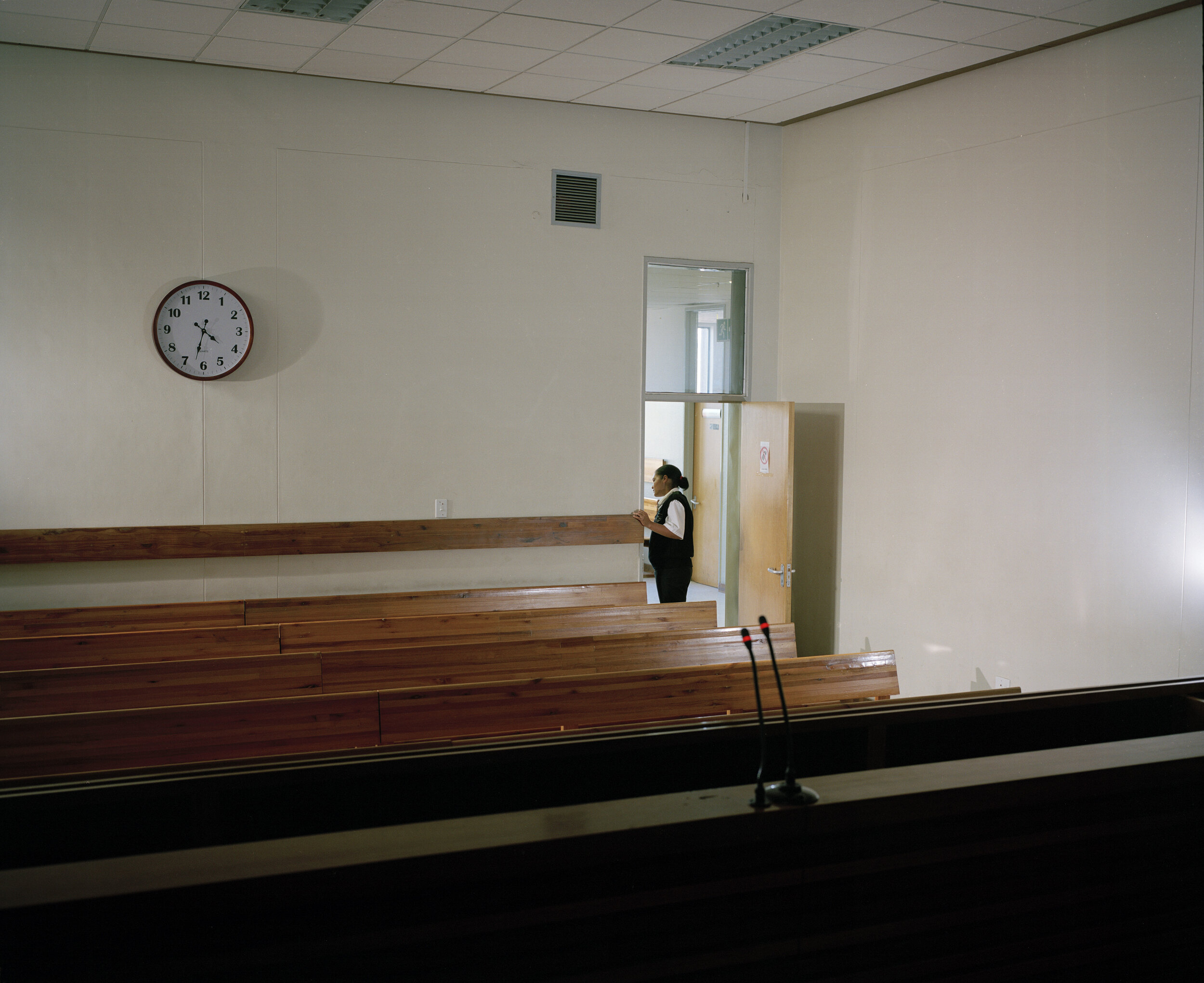













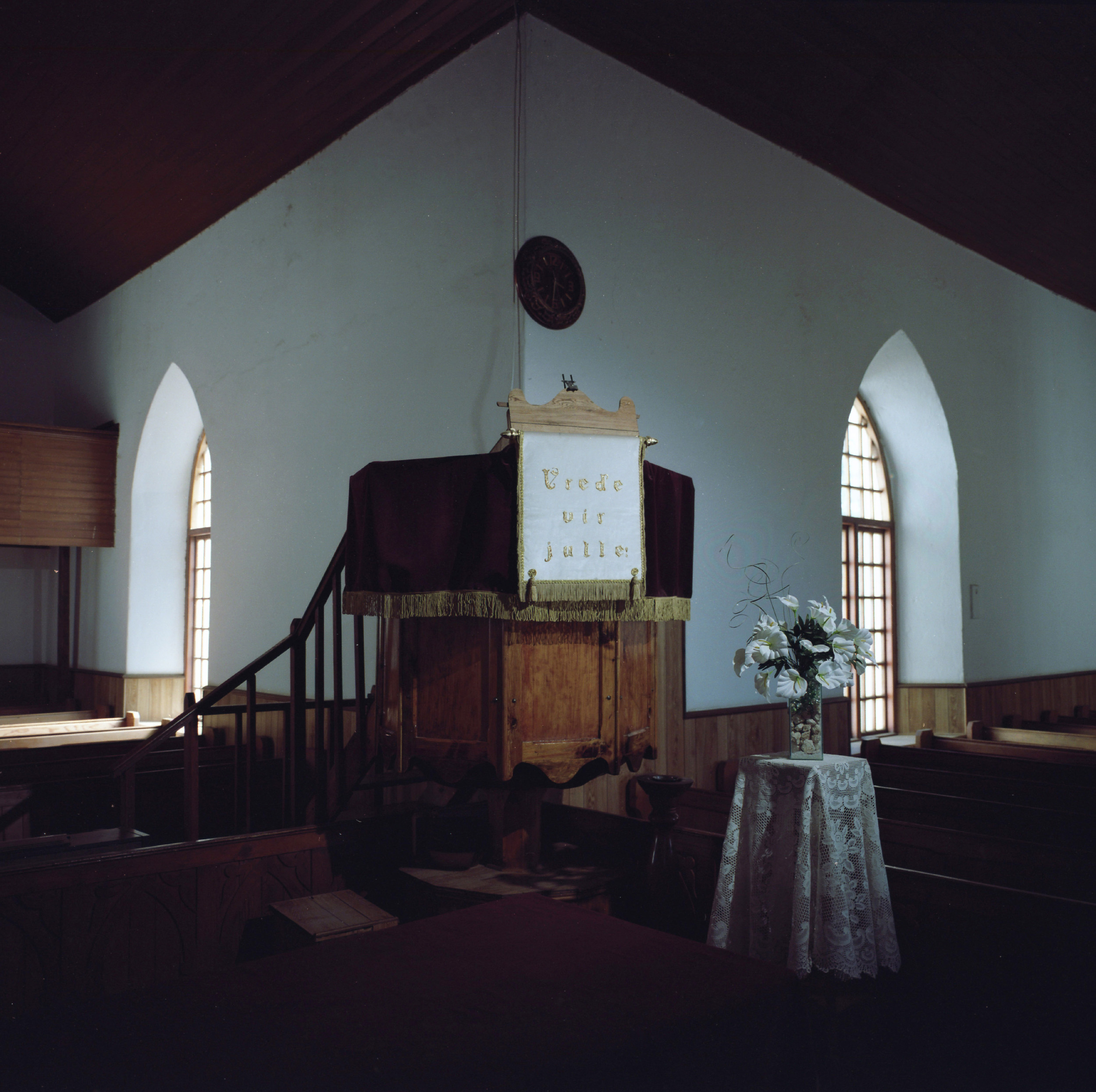












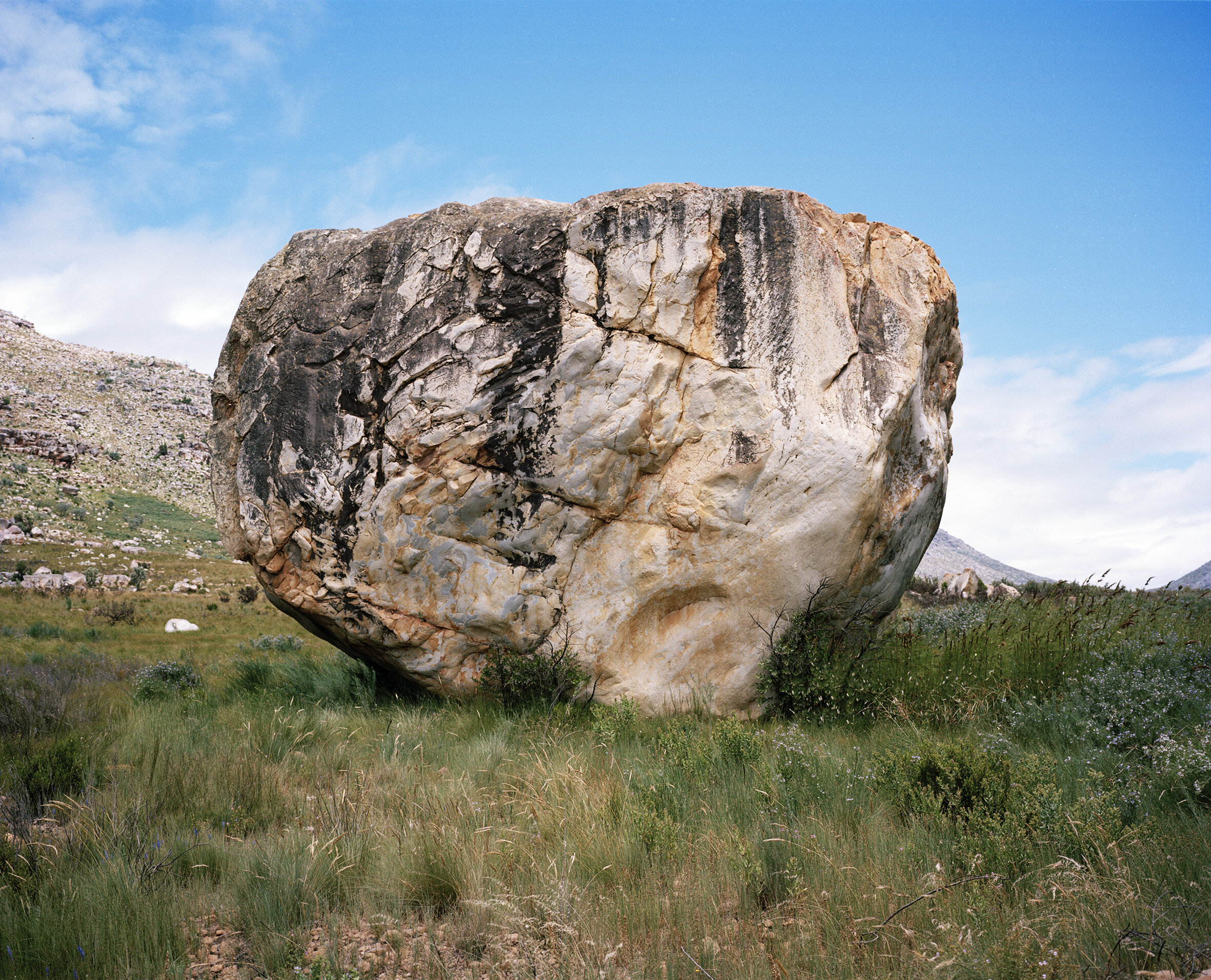















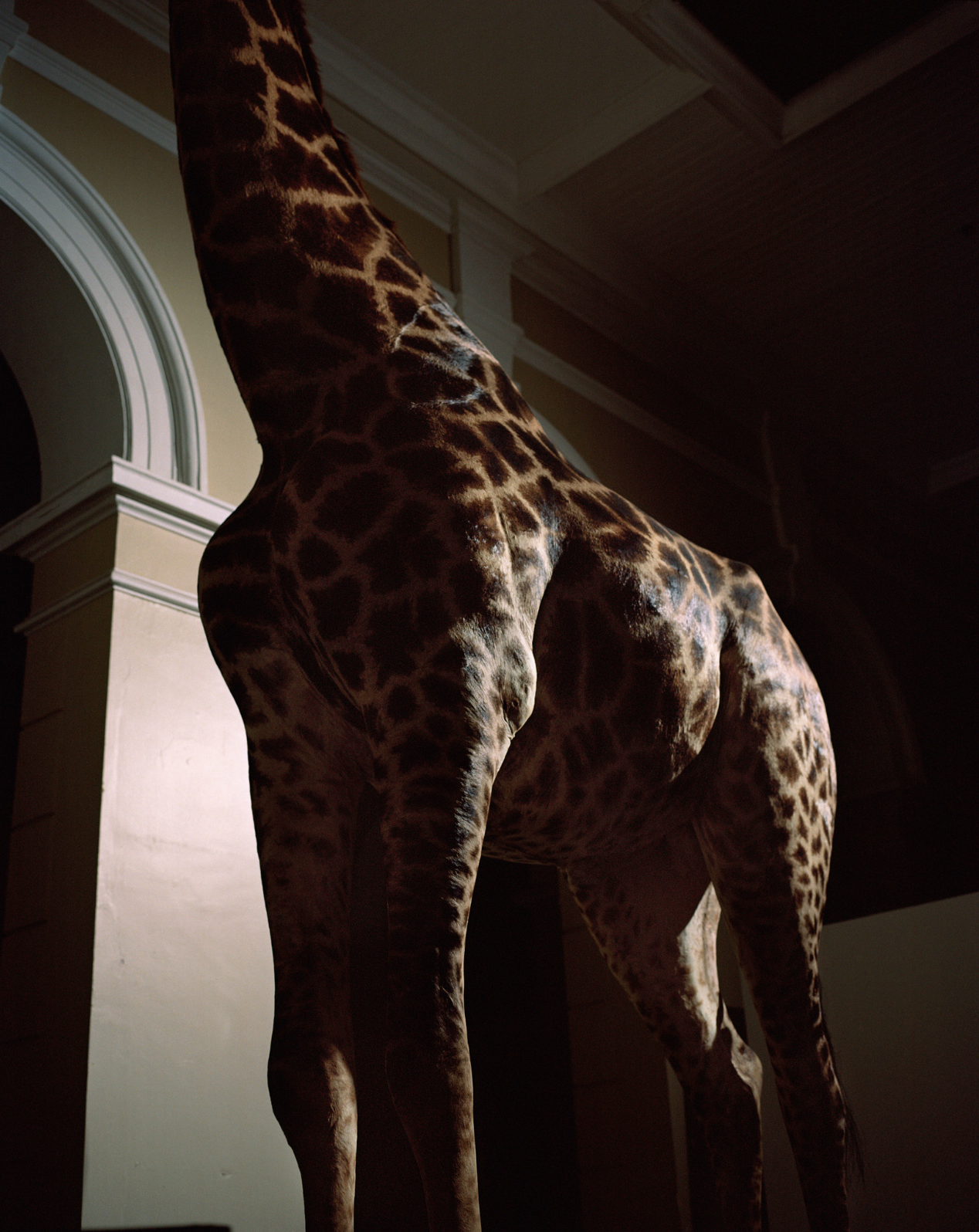

























































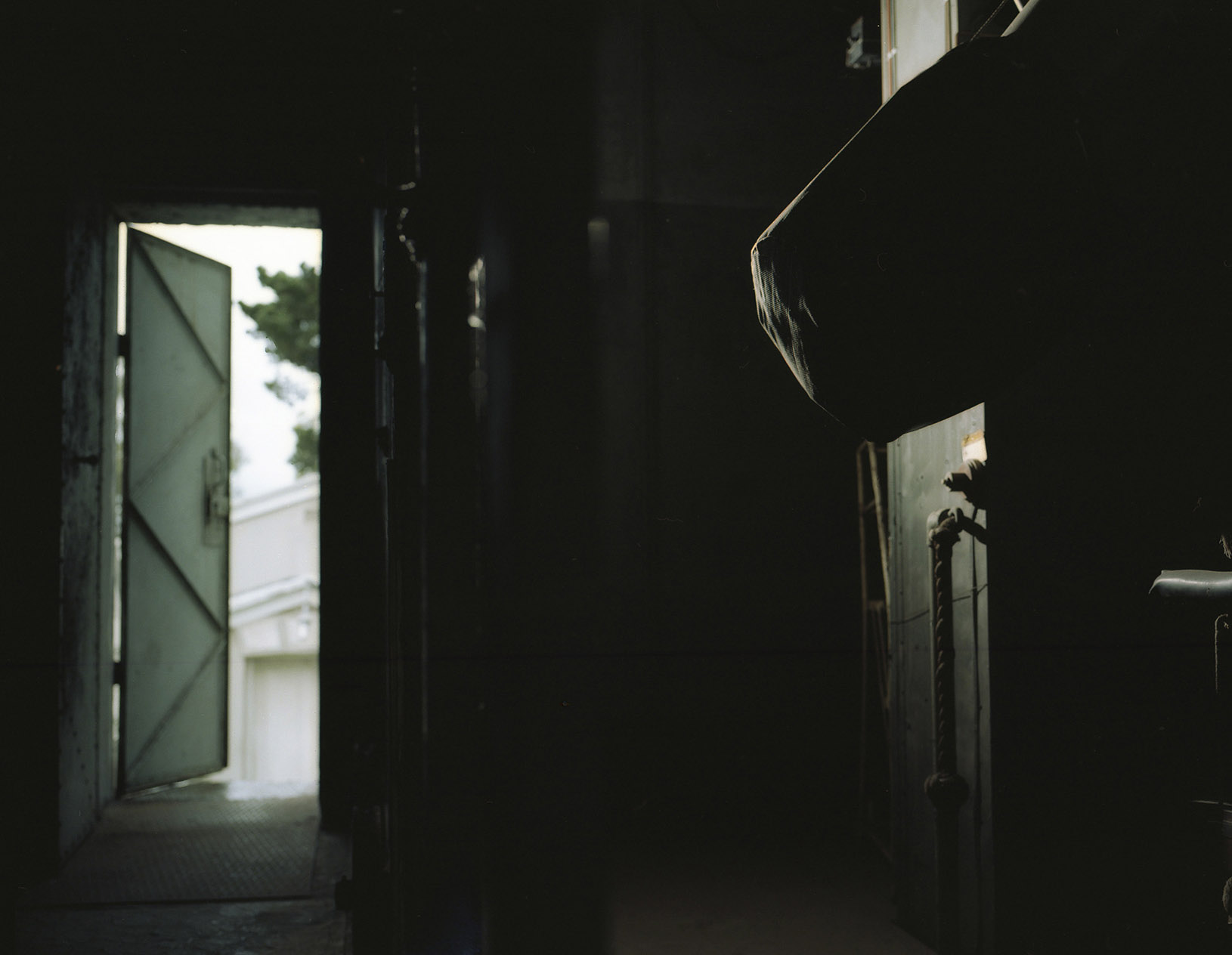









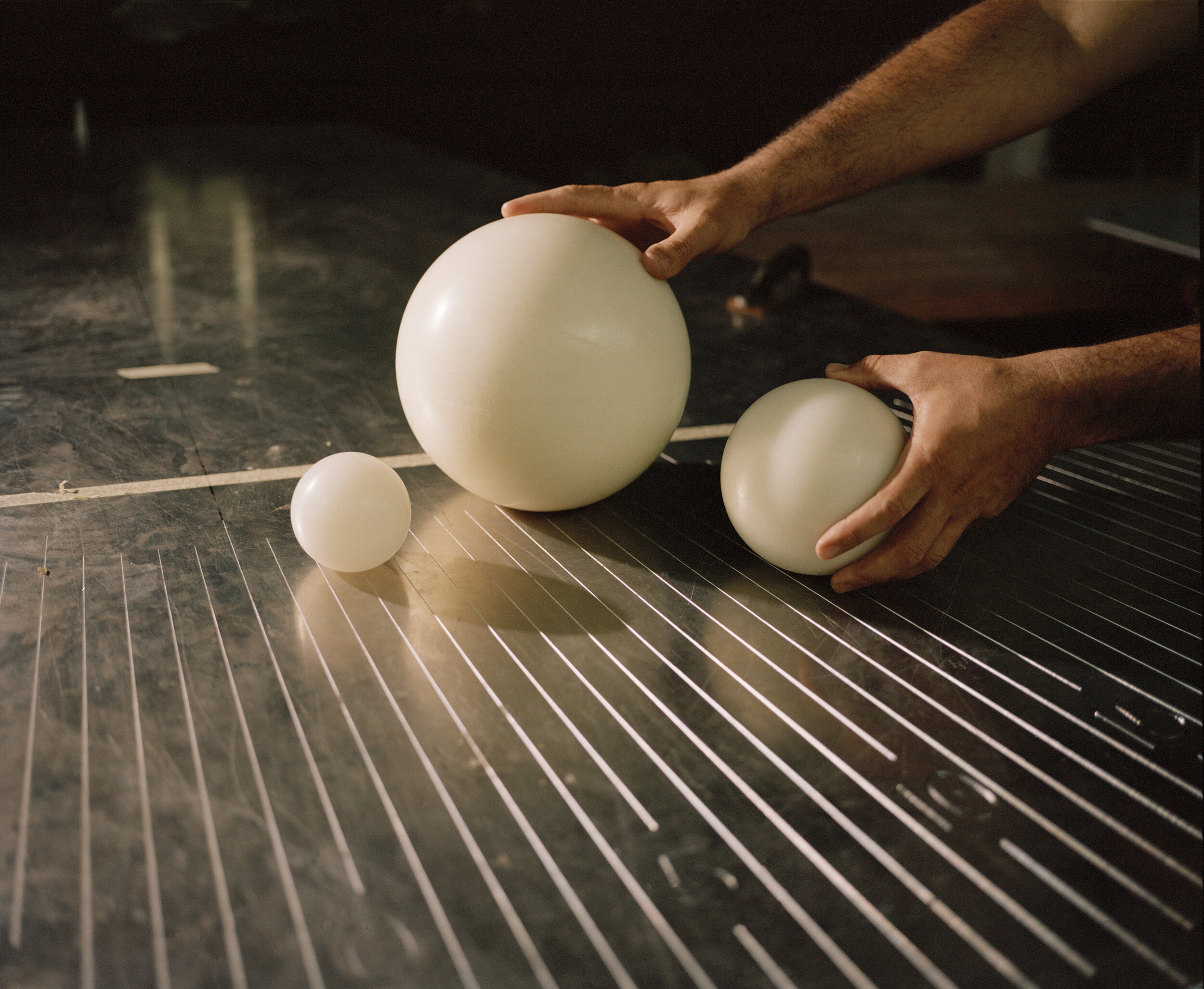




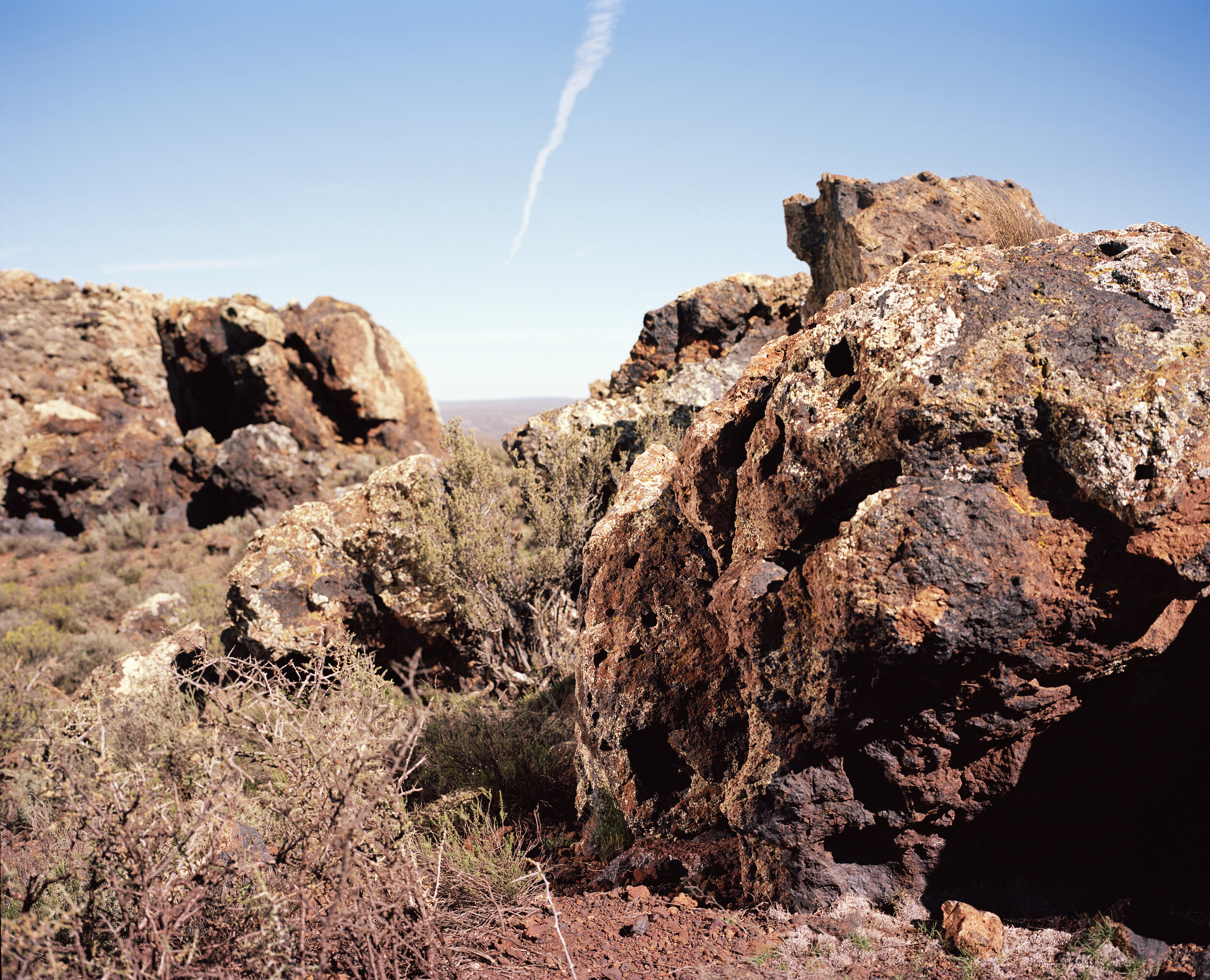

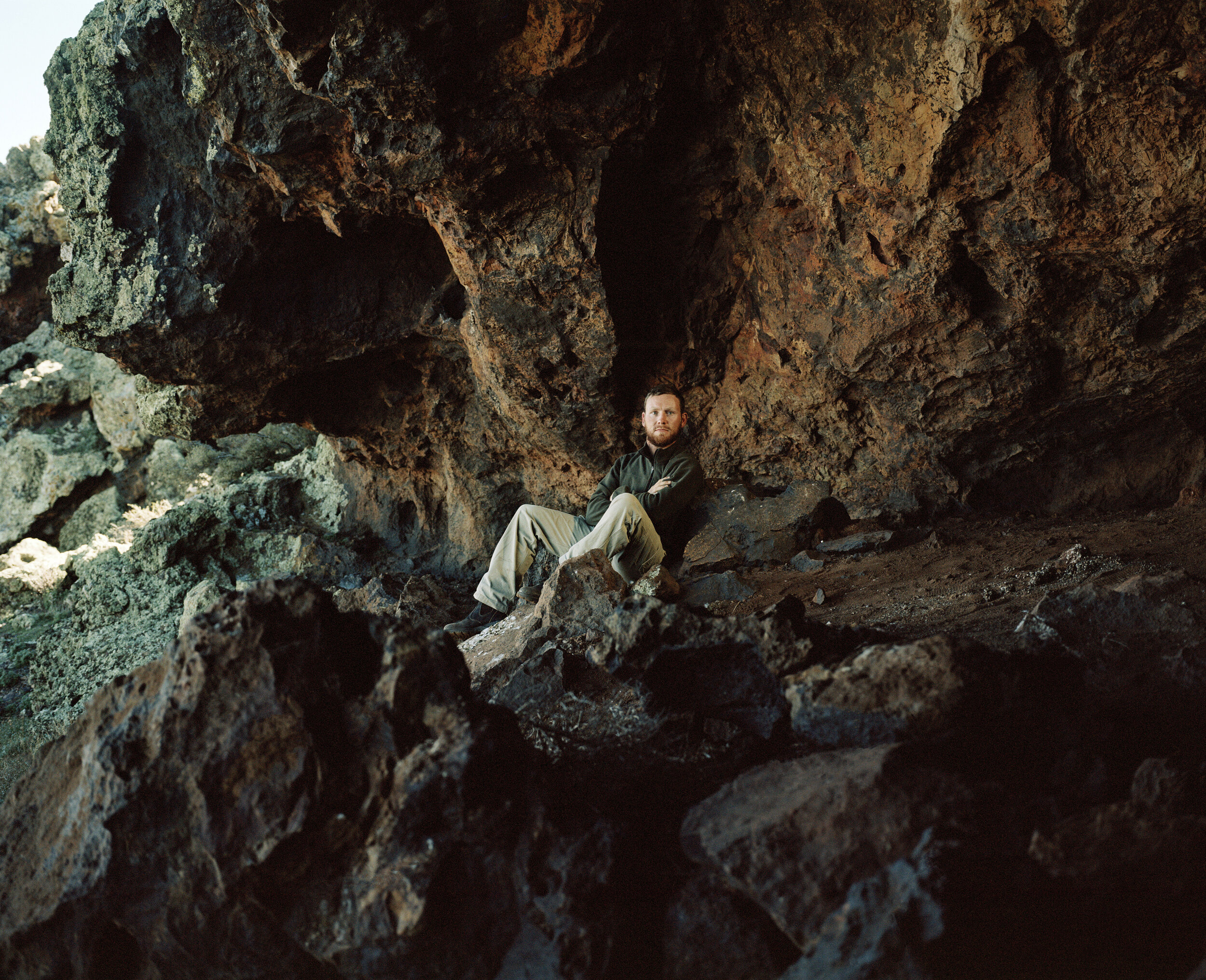




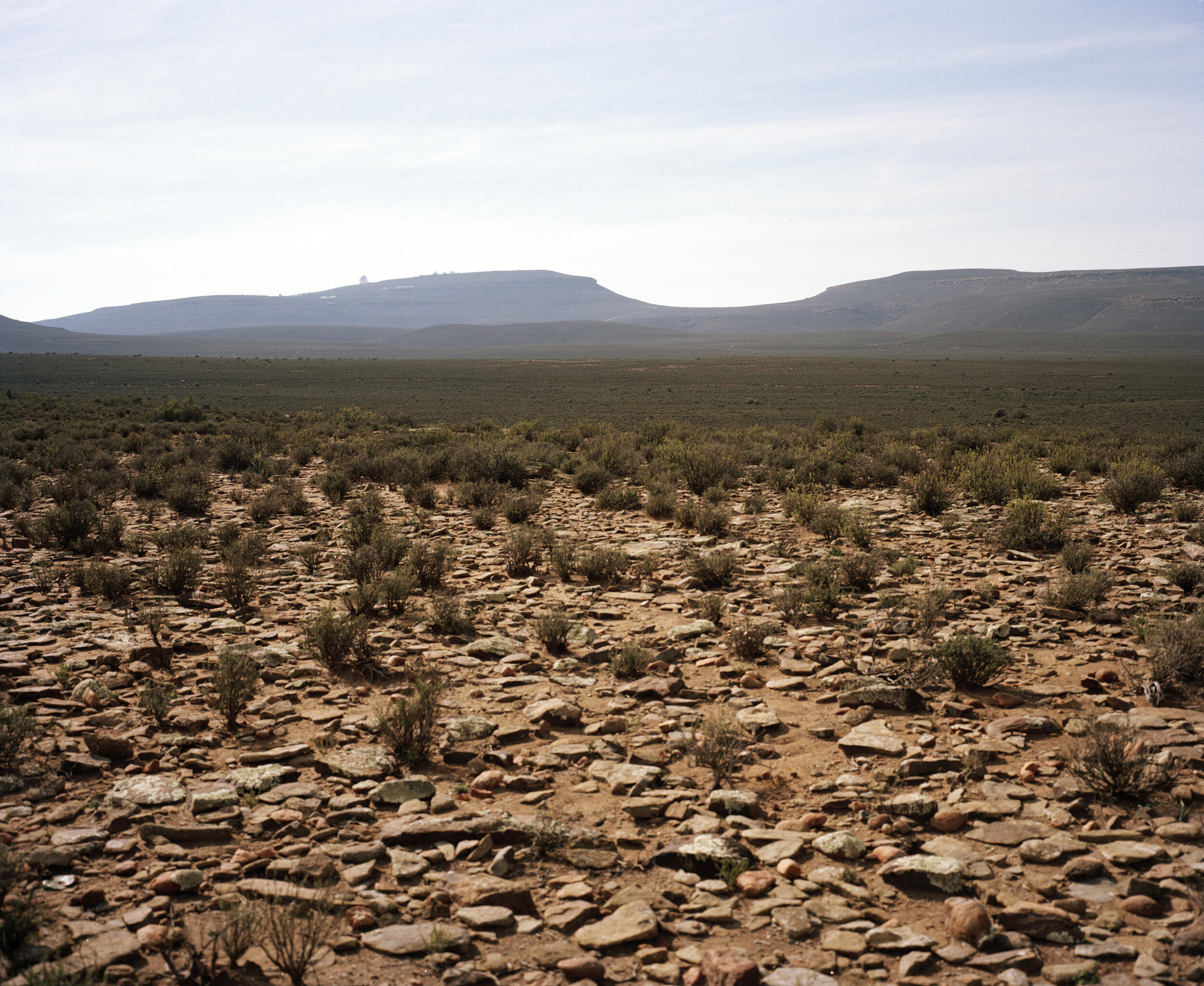



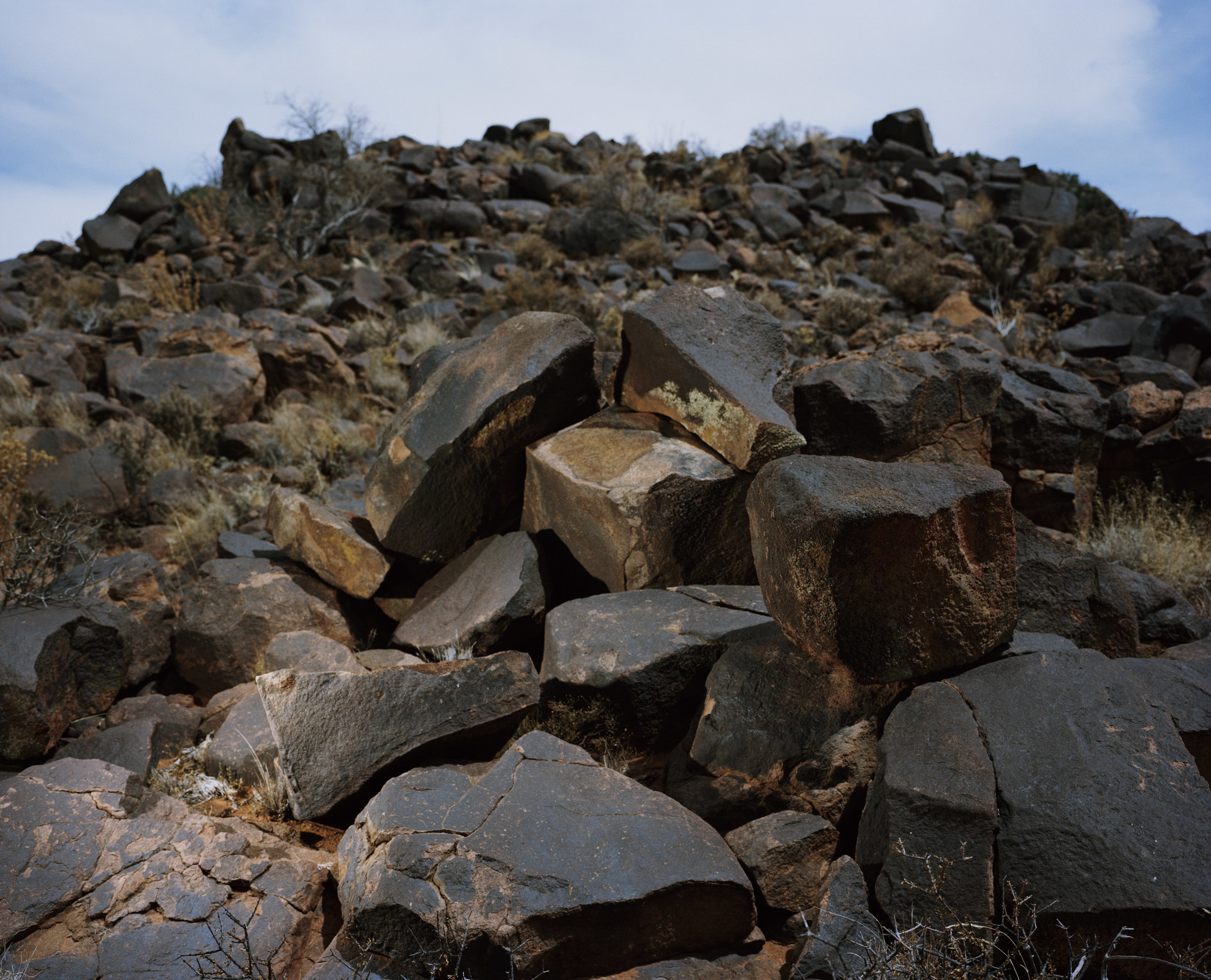

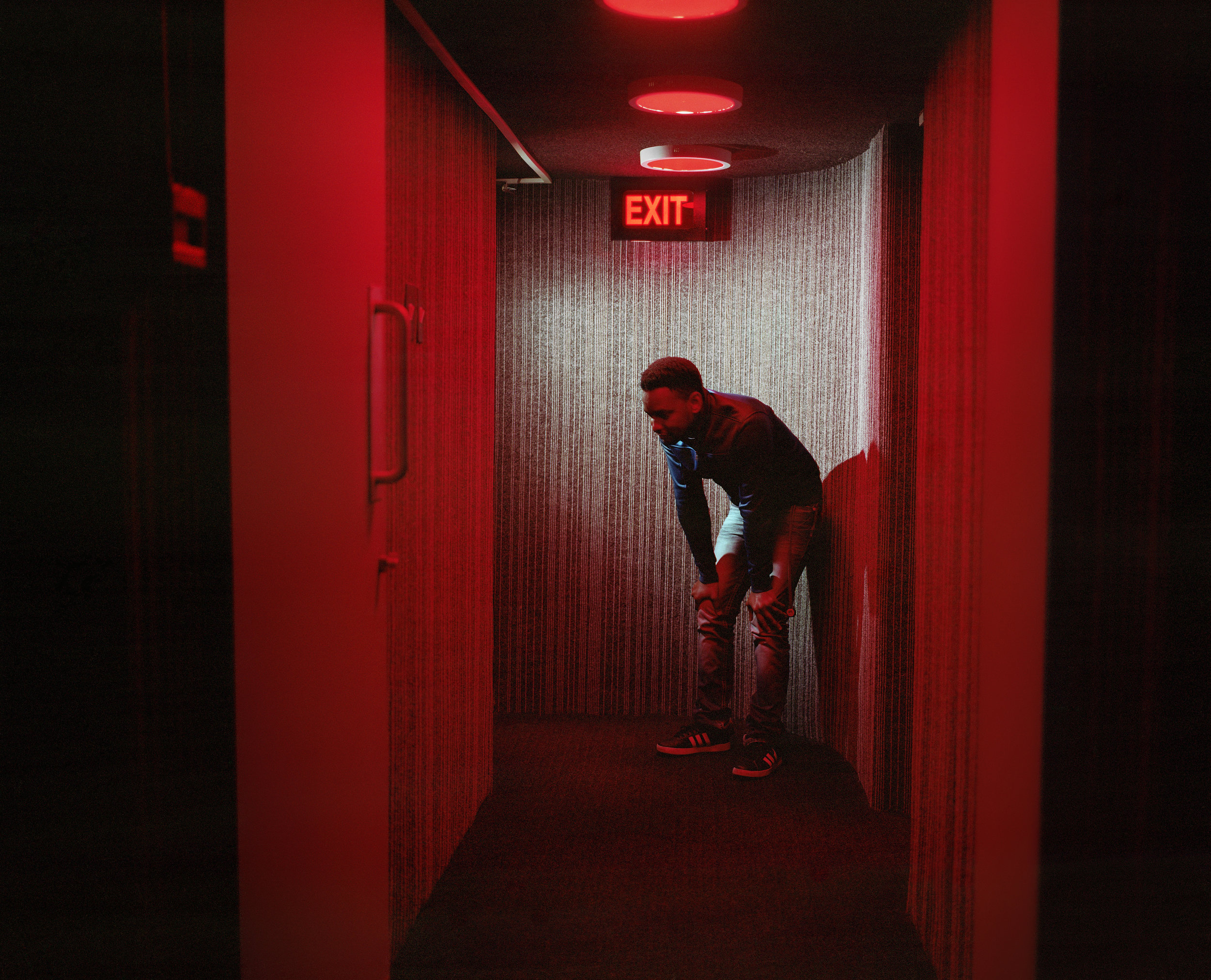
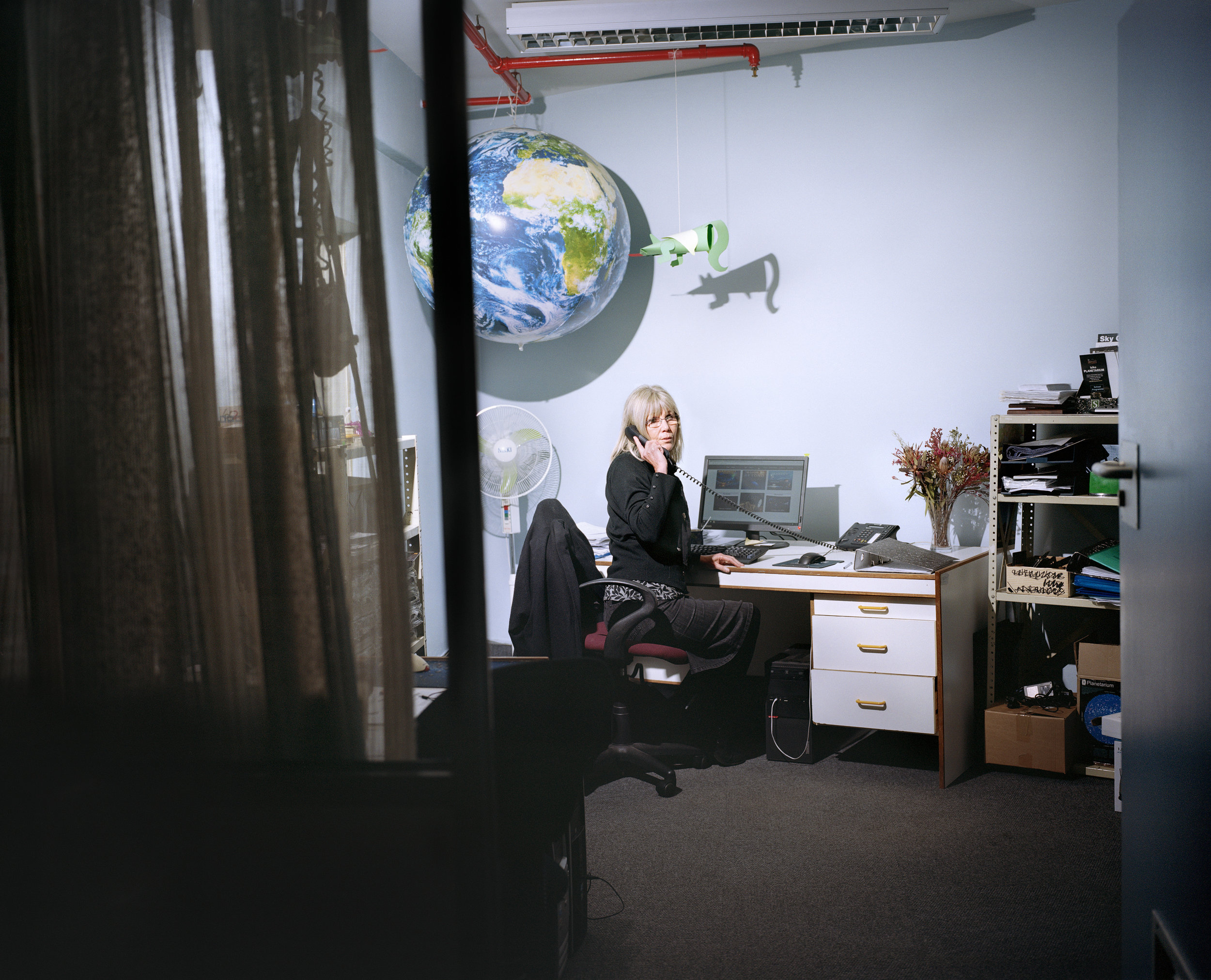



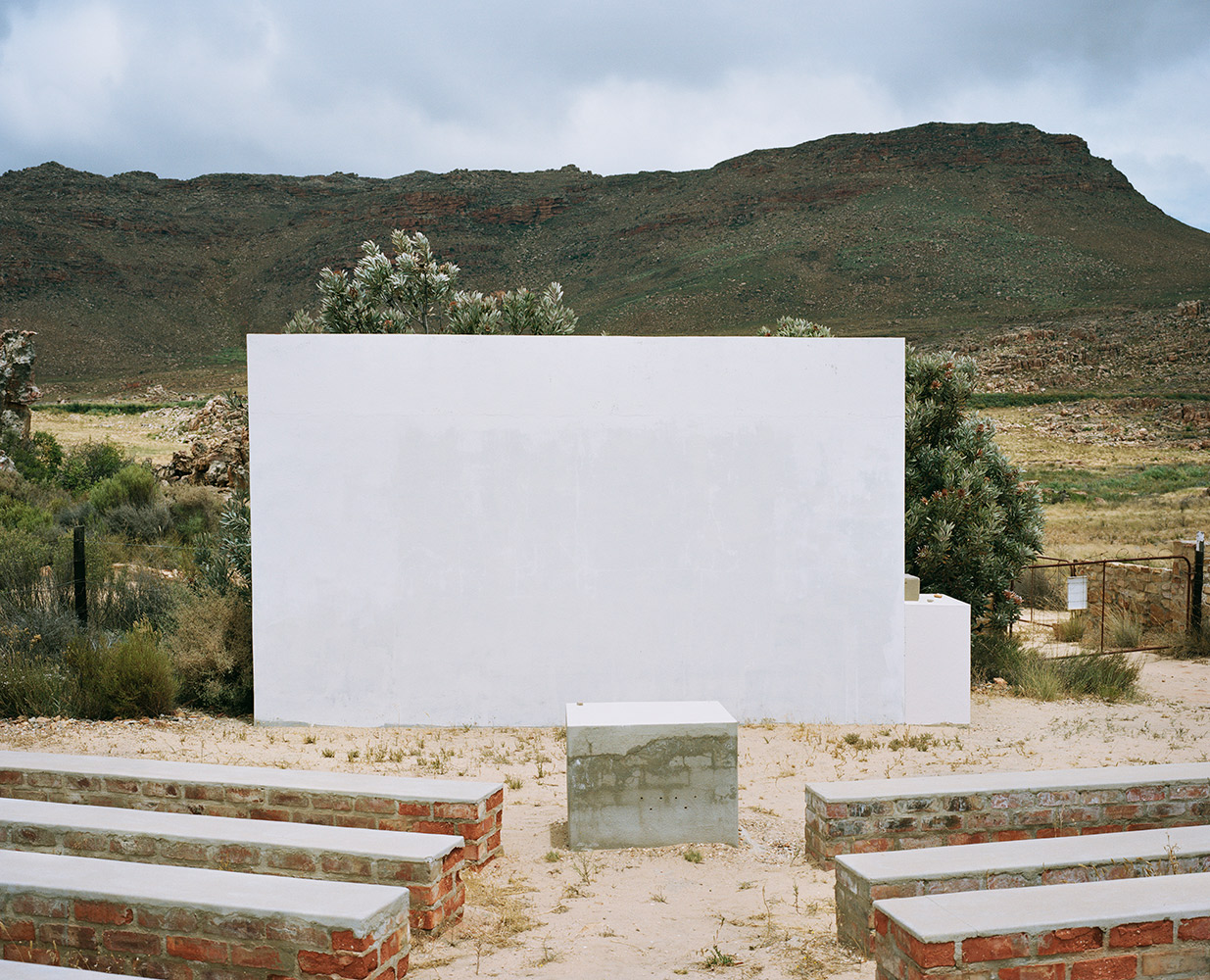






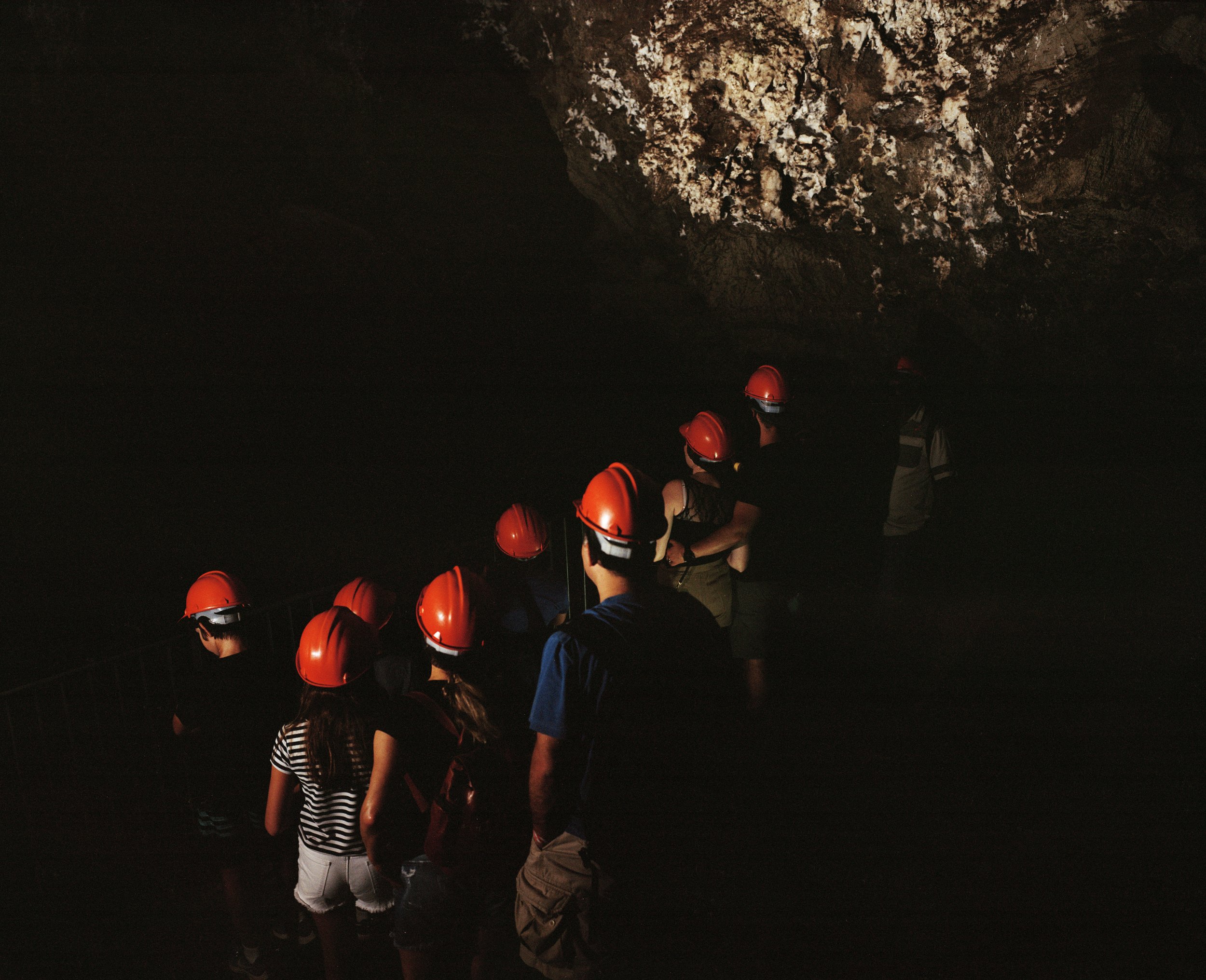








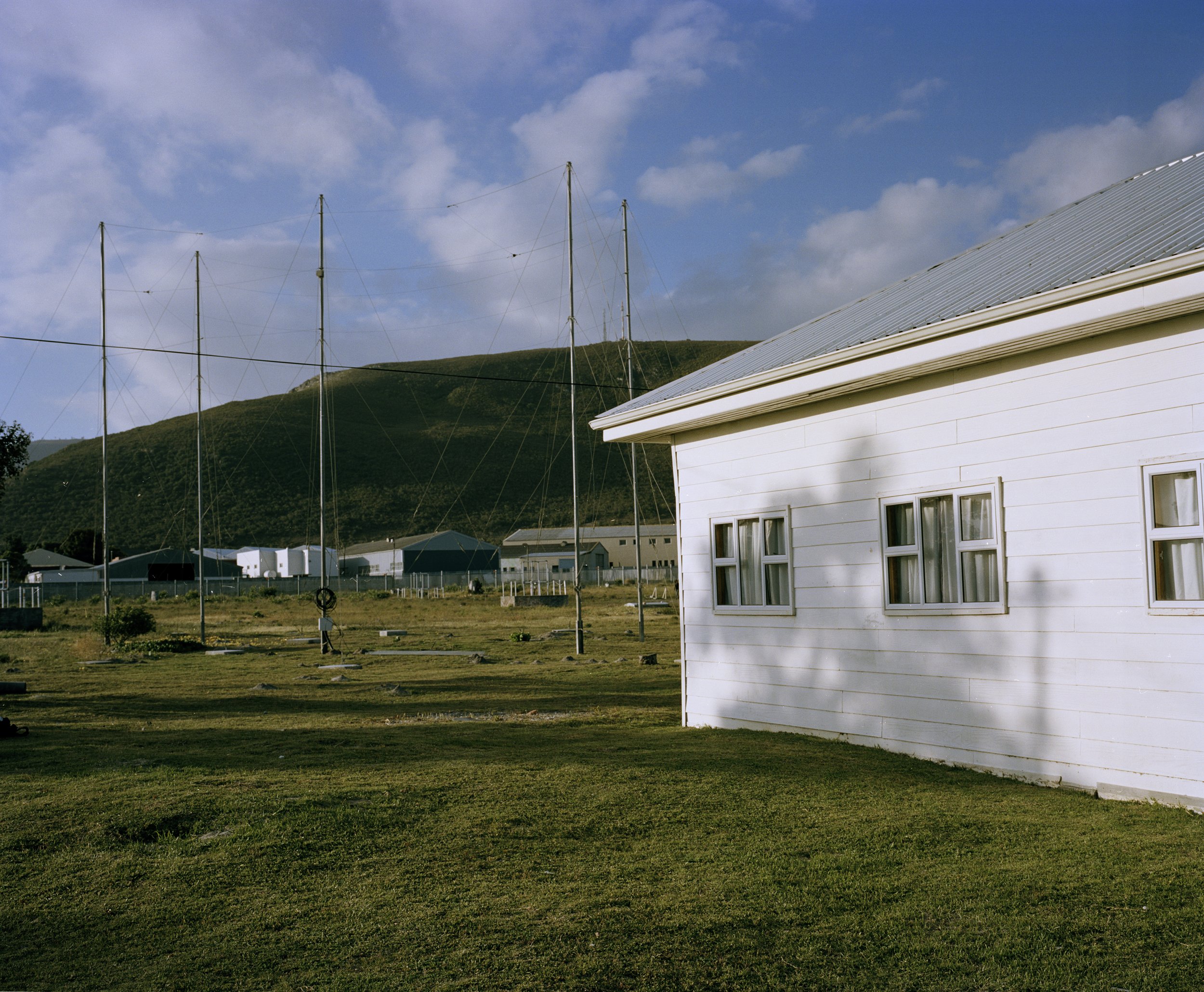
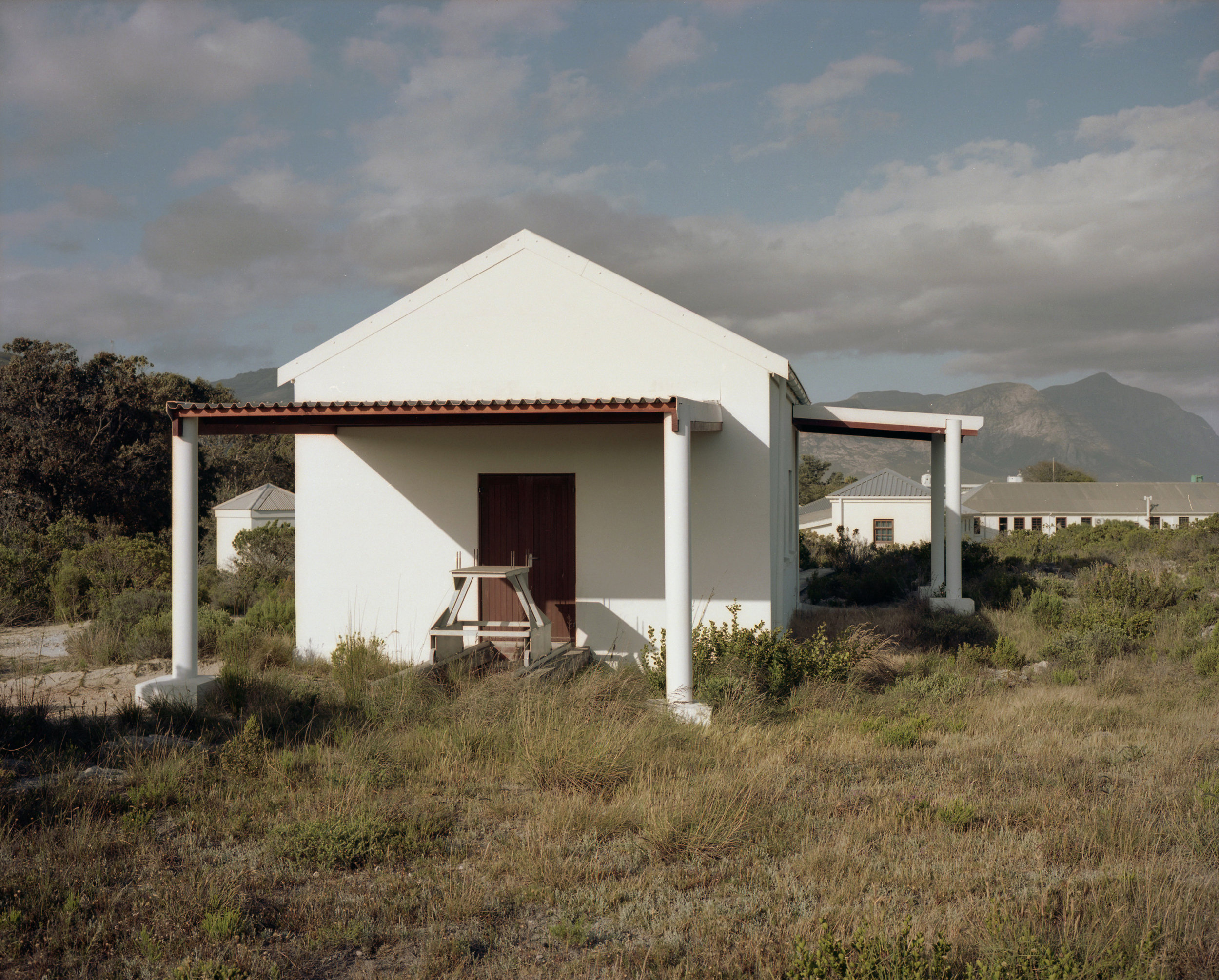









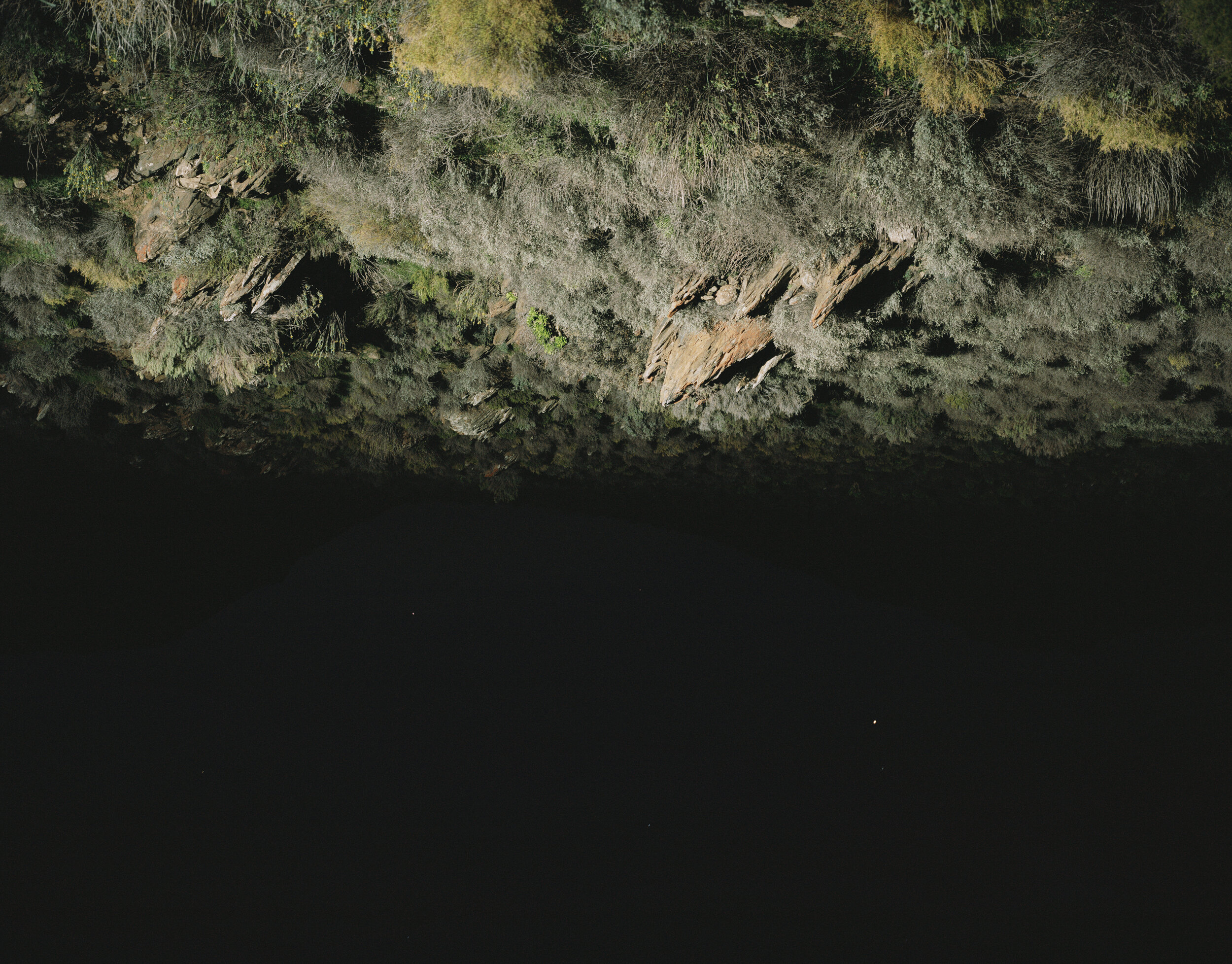






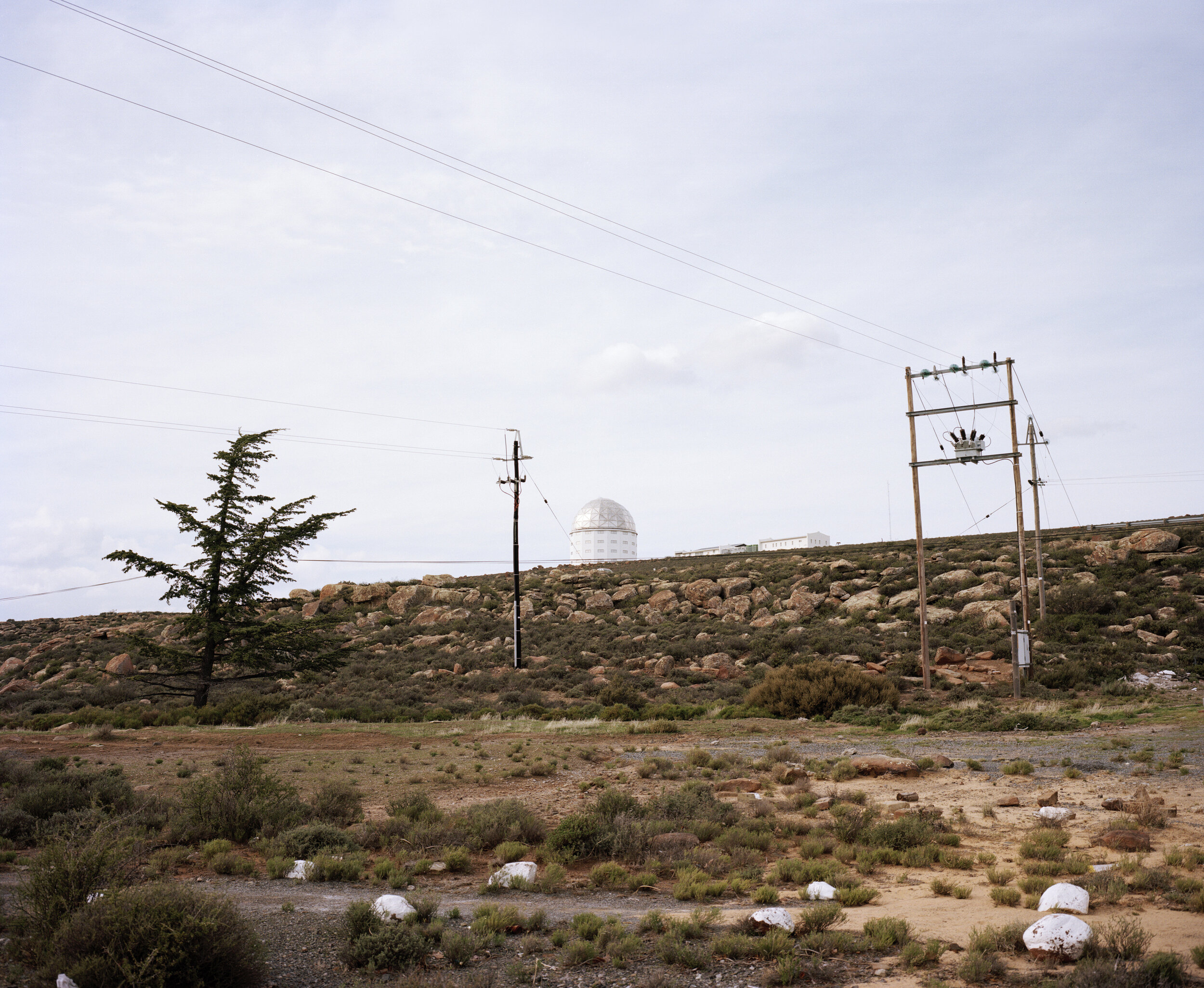









































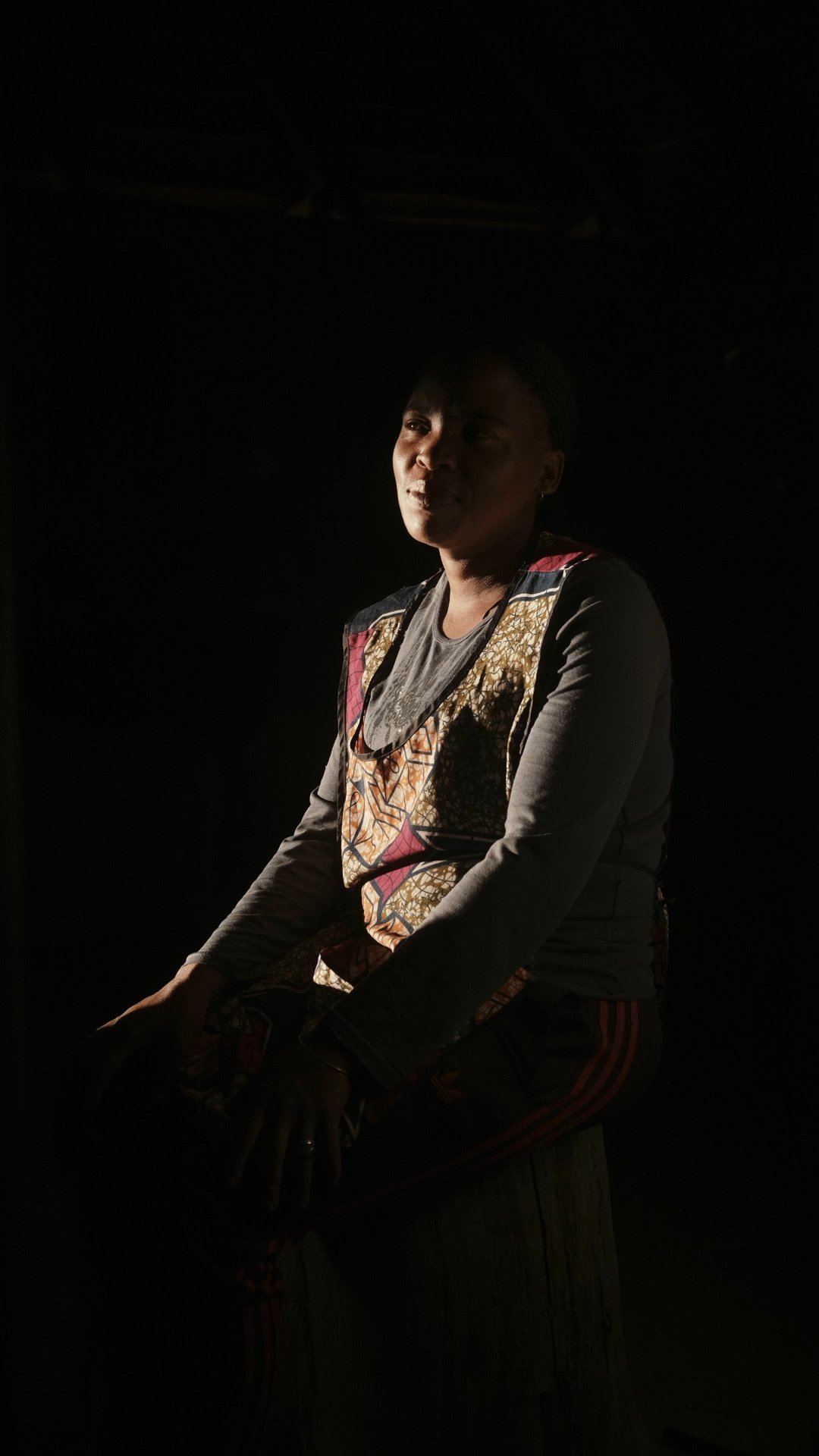


























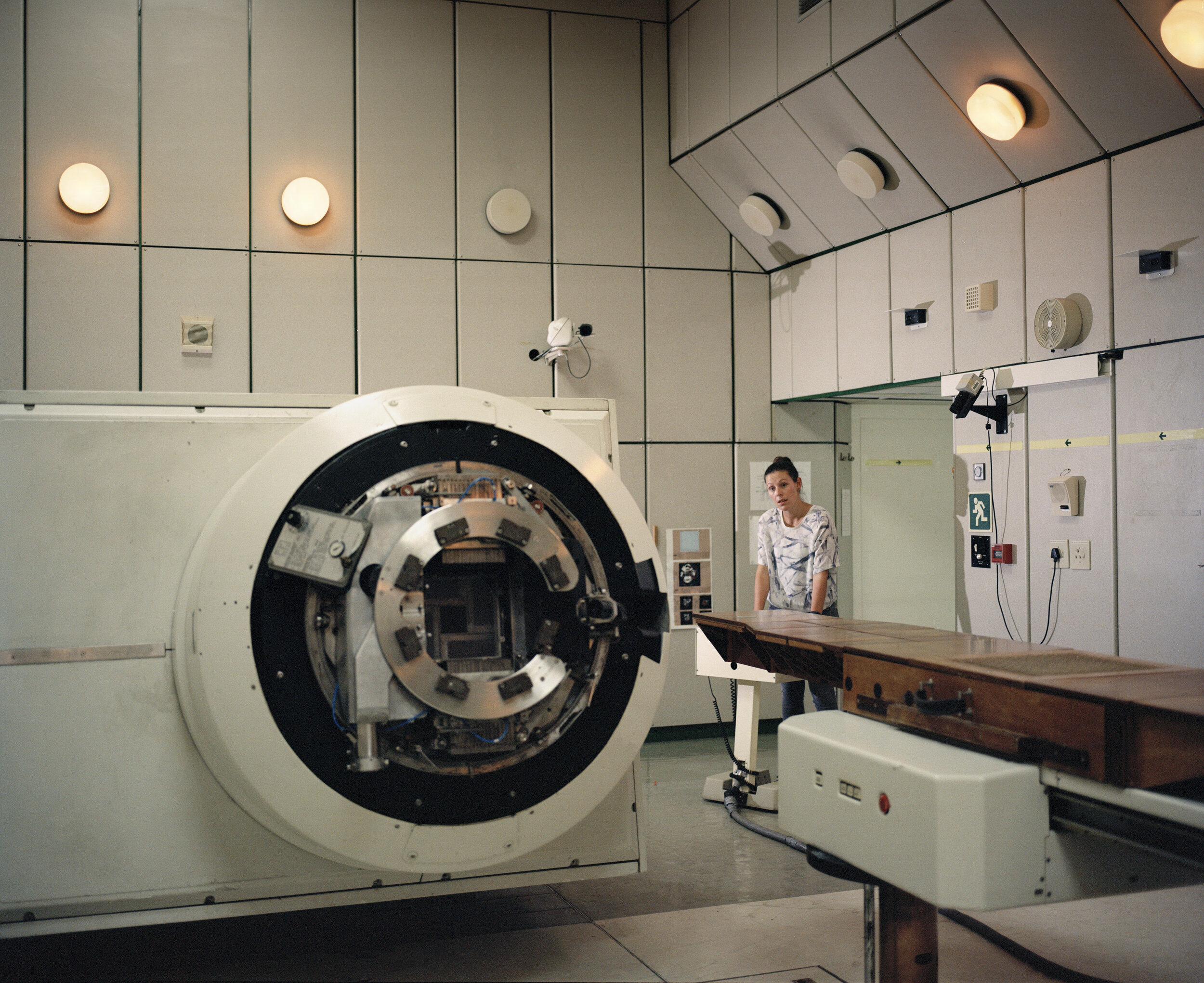





'We are leaving a memory - an inheritance through the SKA. We are staying positive because a change is coming into the land - so that many people can see. We heard about changes in Sutherland, and now it is happening here as well. Many are negative but they perhaps do not know what is really happening. For our children this will help them, to go into a direction to study, at the University. They spoke about this at the meeting, going in this direction for the youth. For the future I'd love for the children to learn, and not struggle with work, to get a bursary and to study further.'